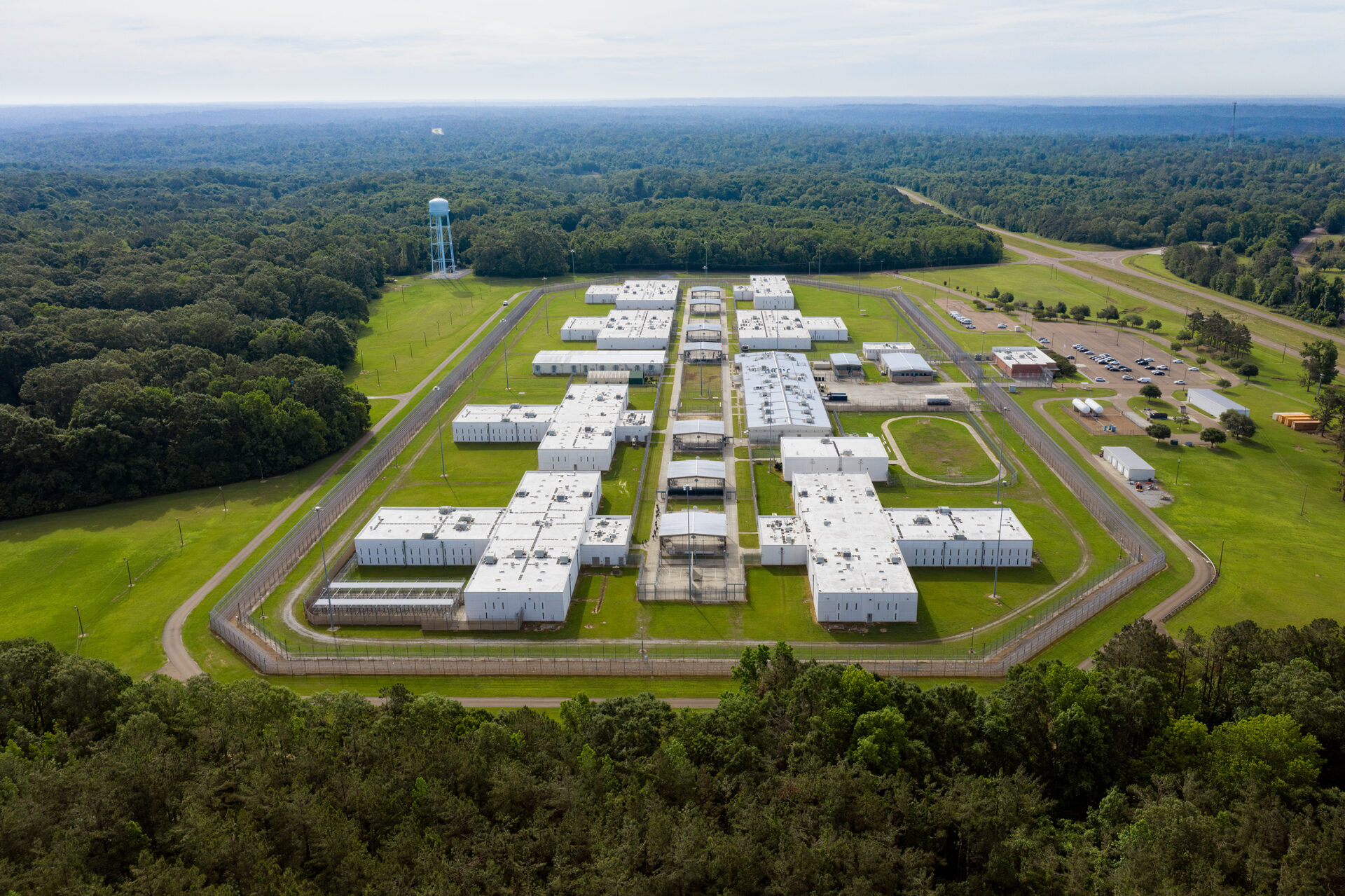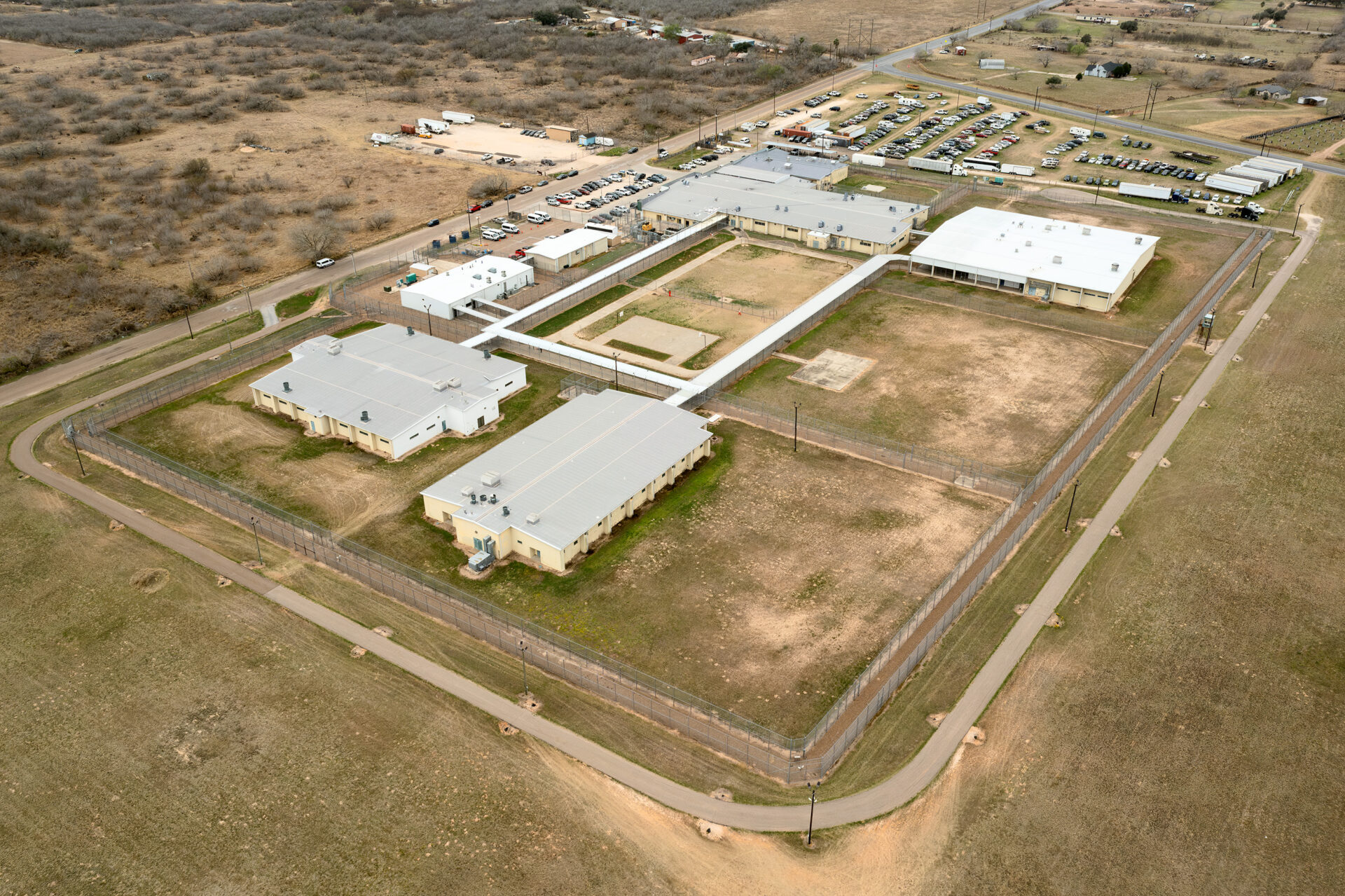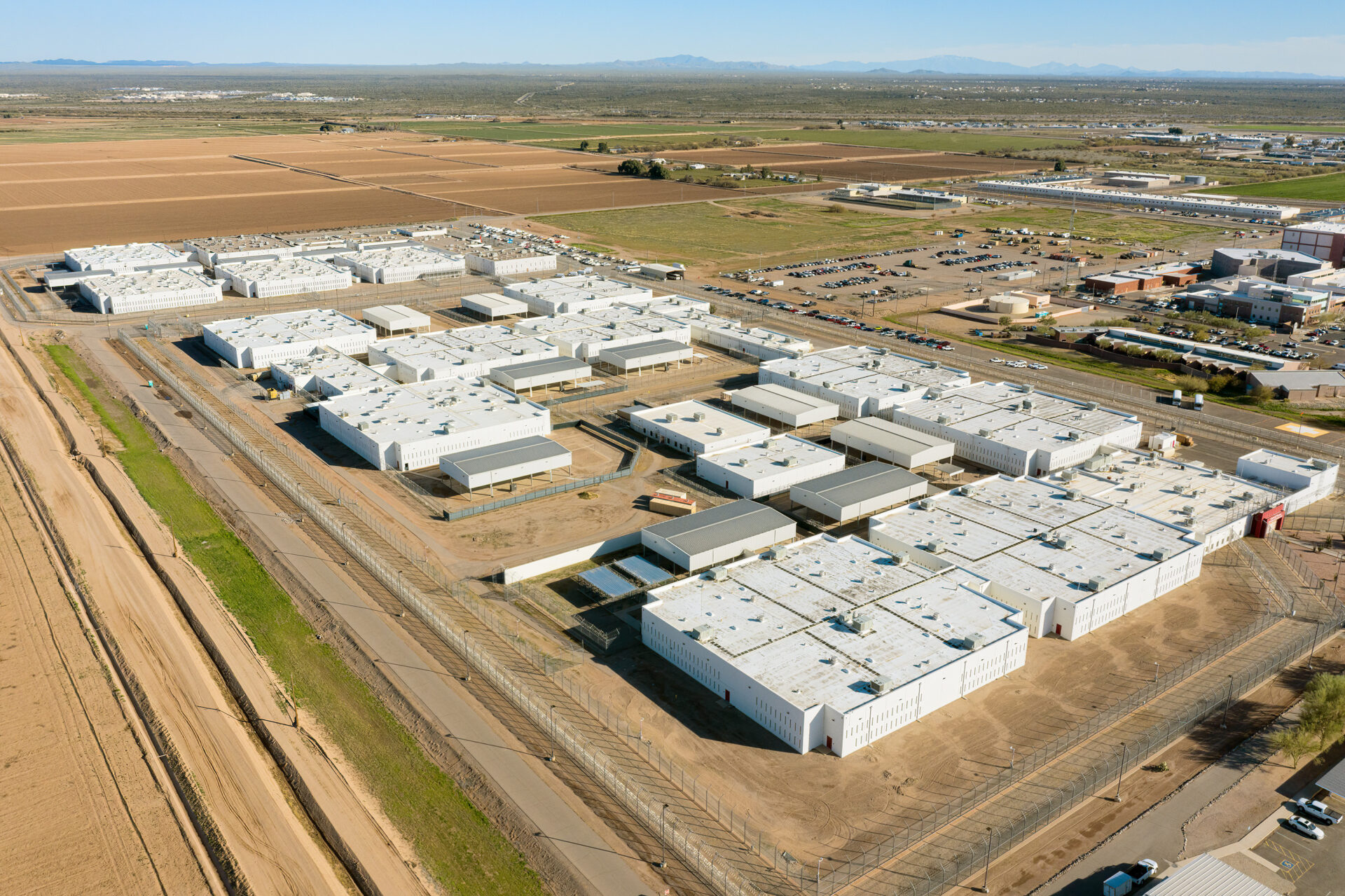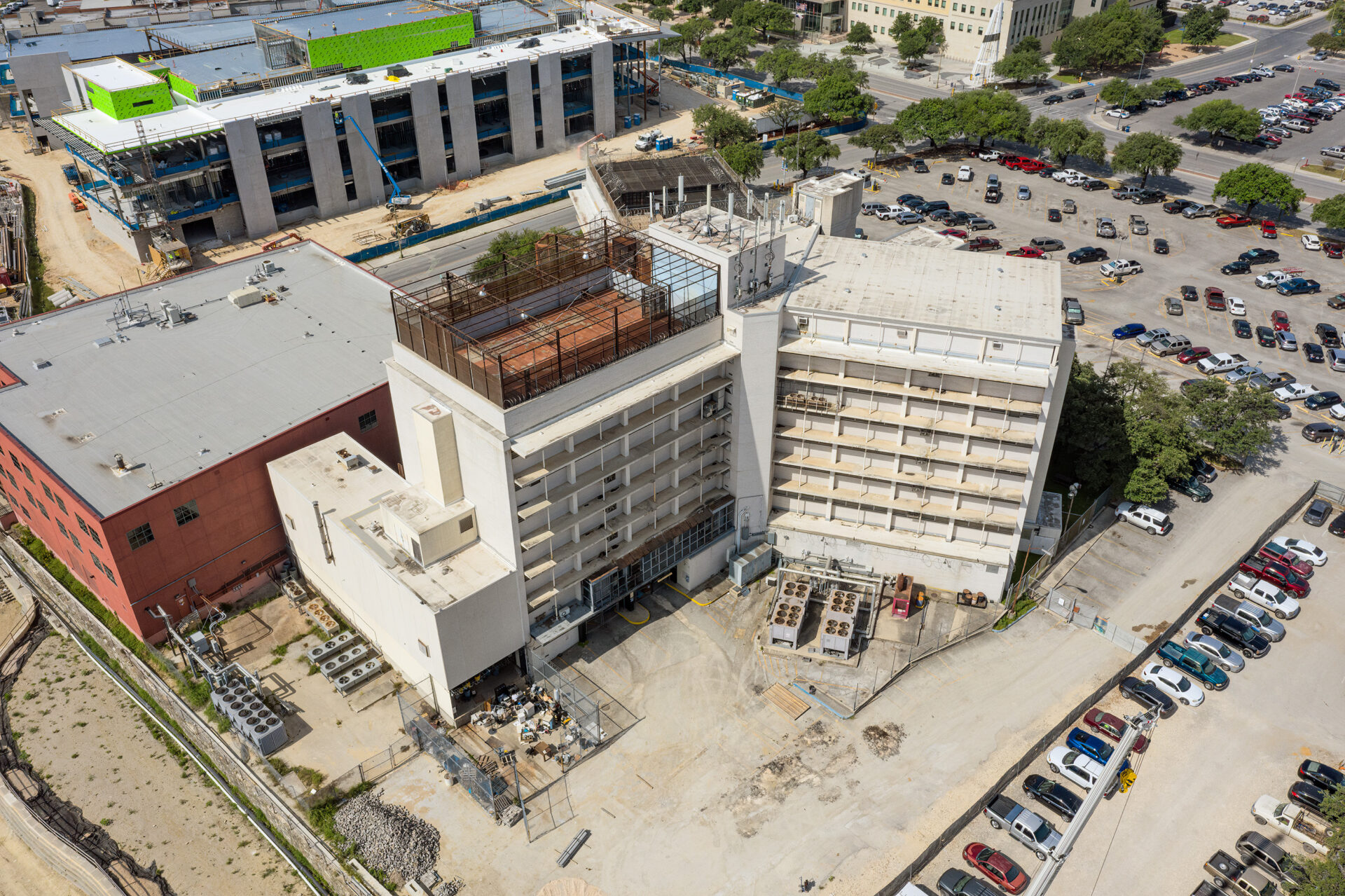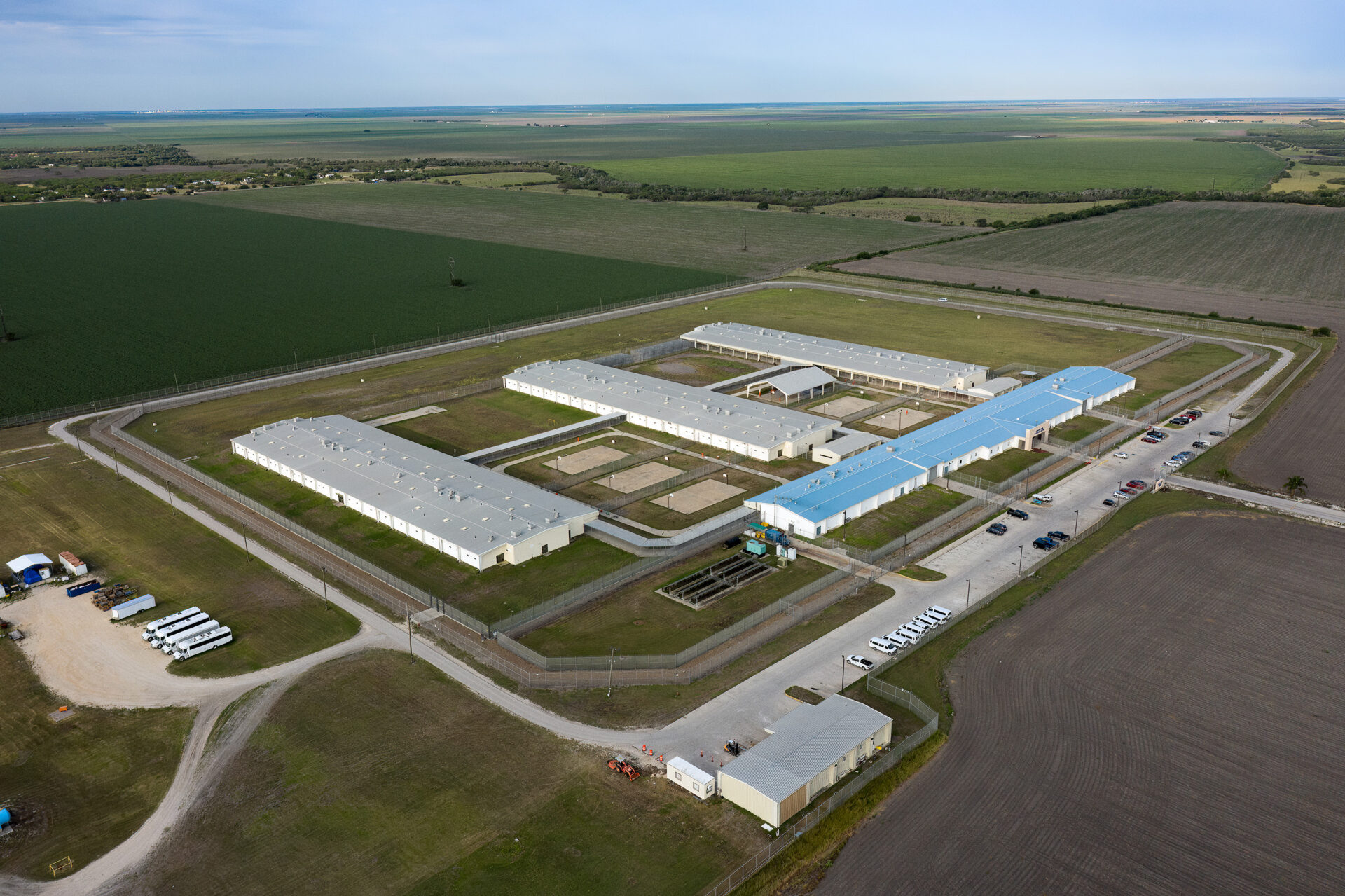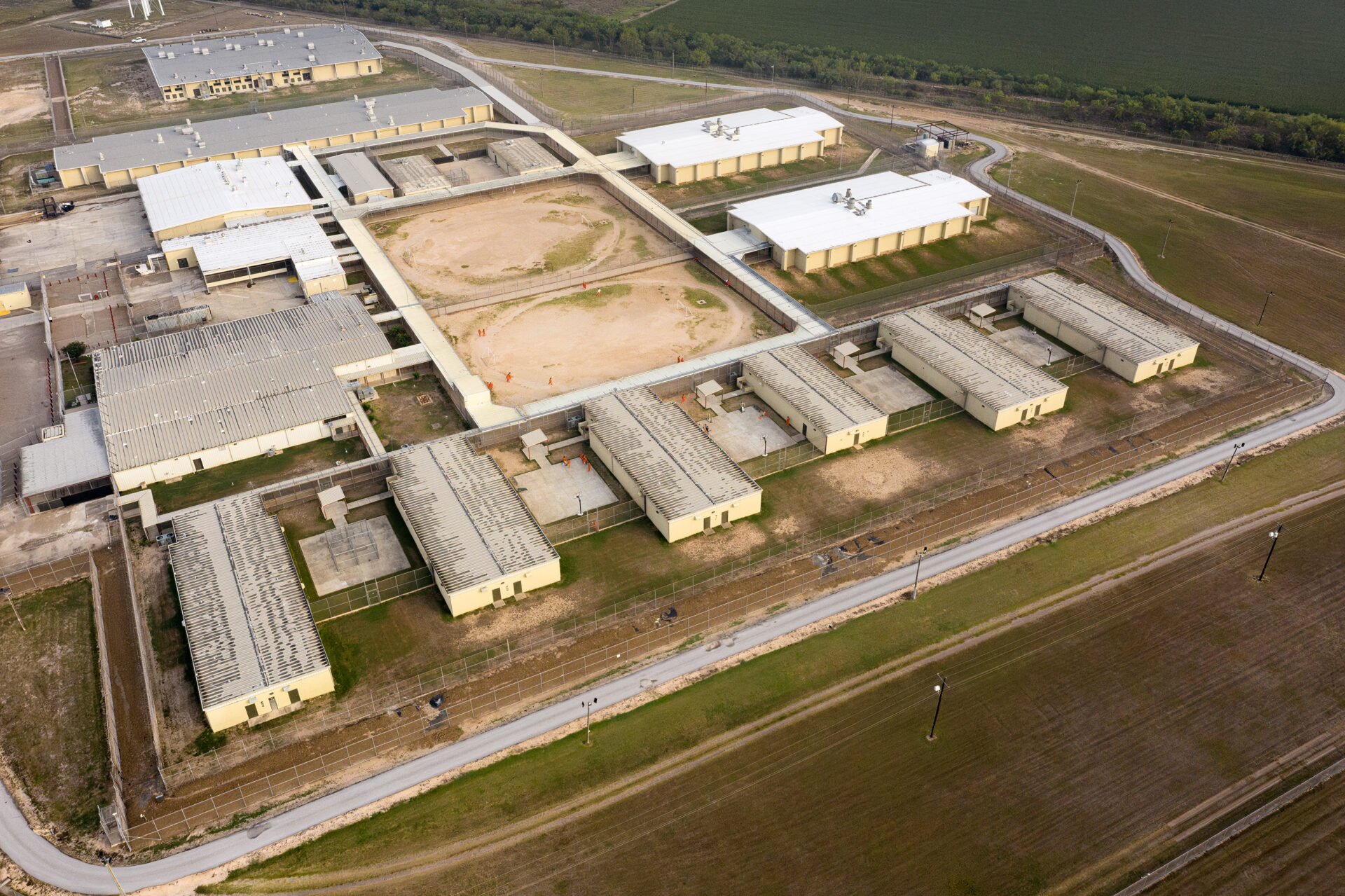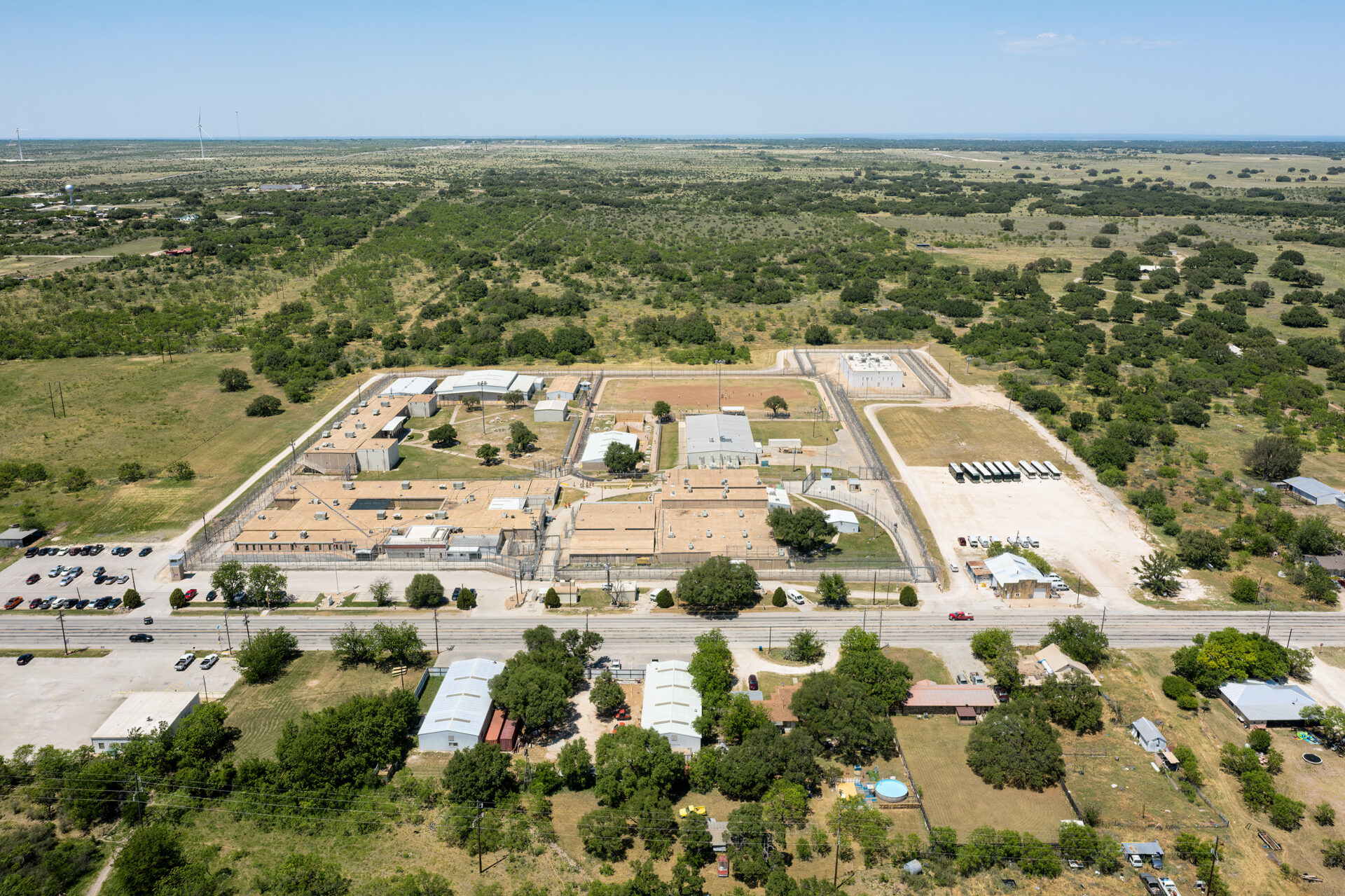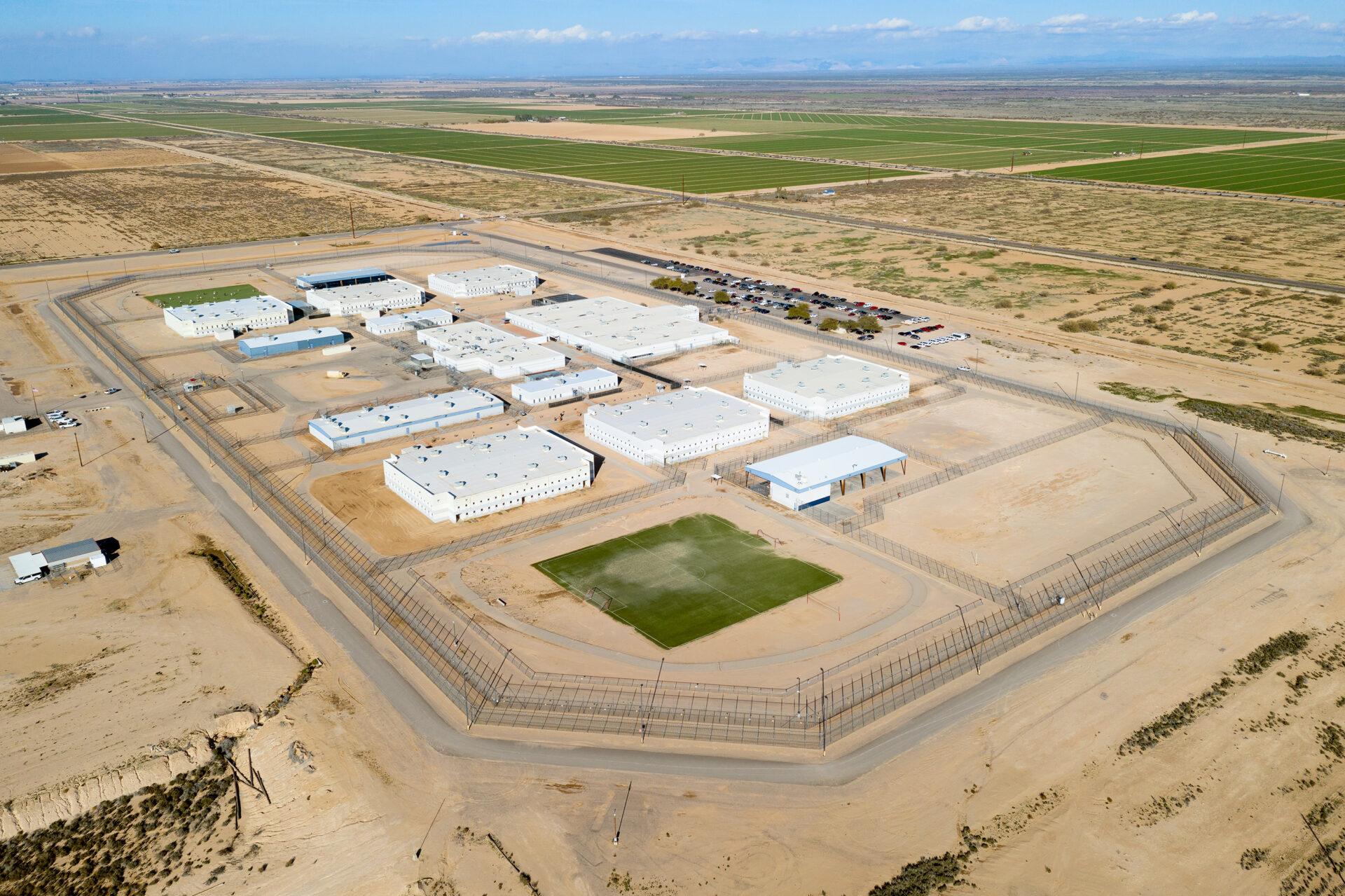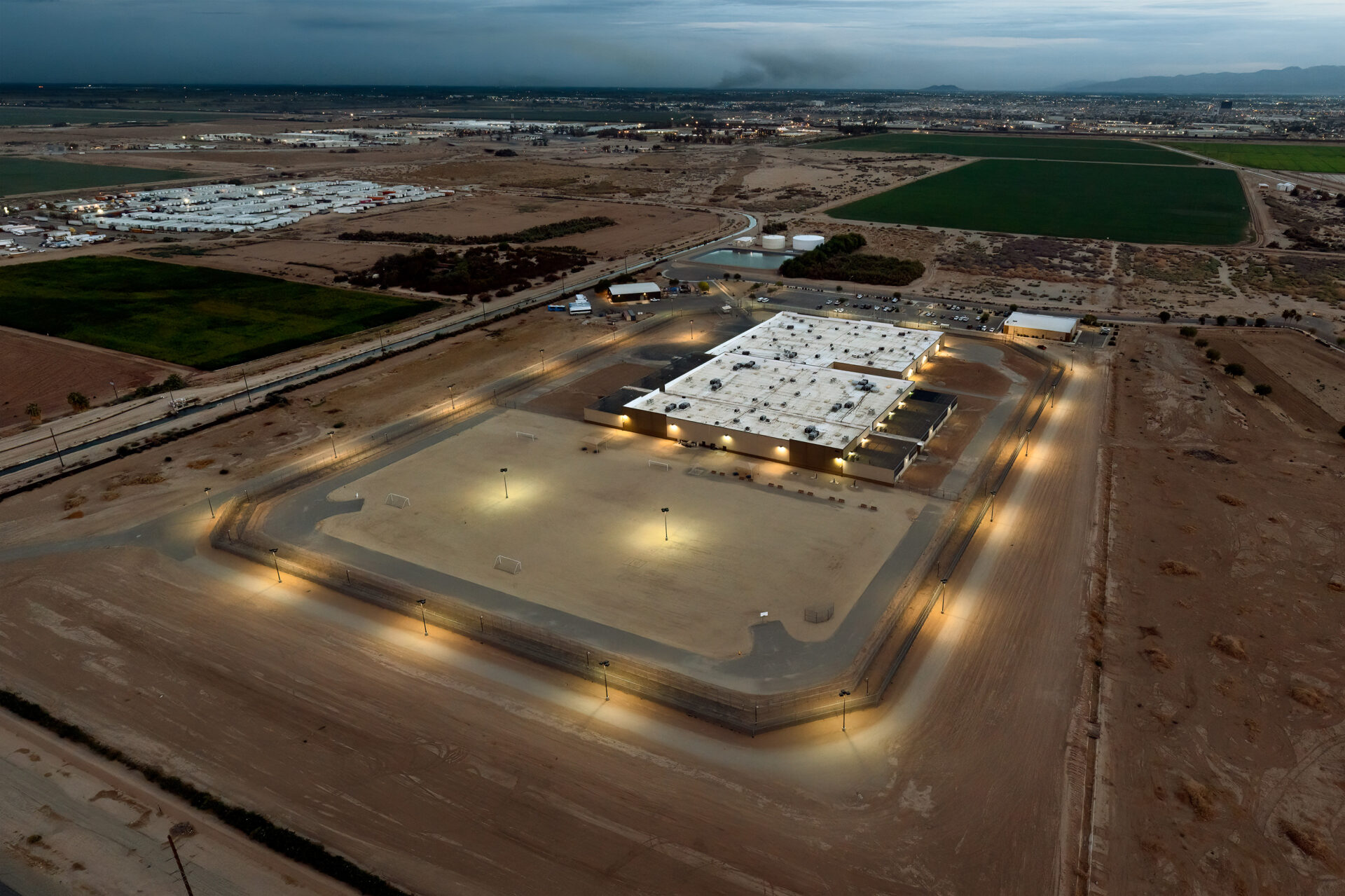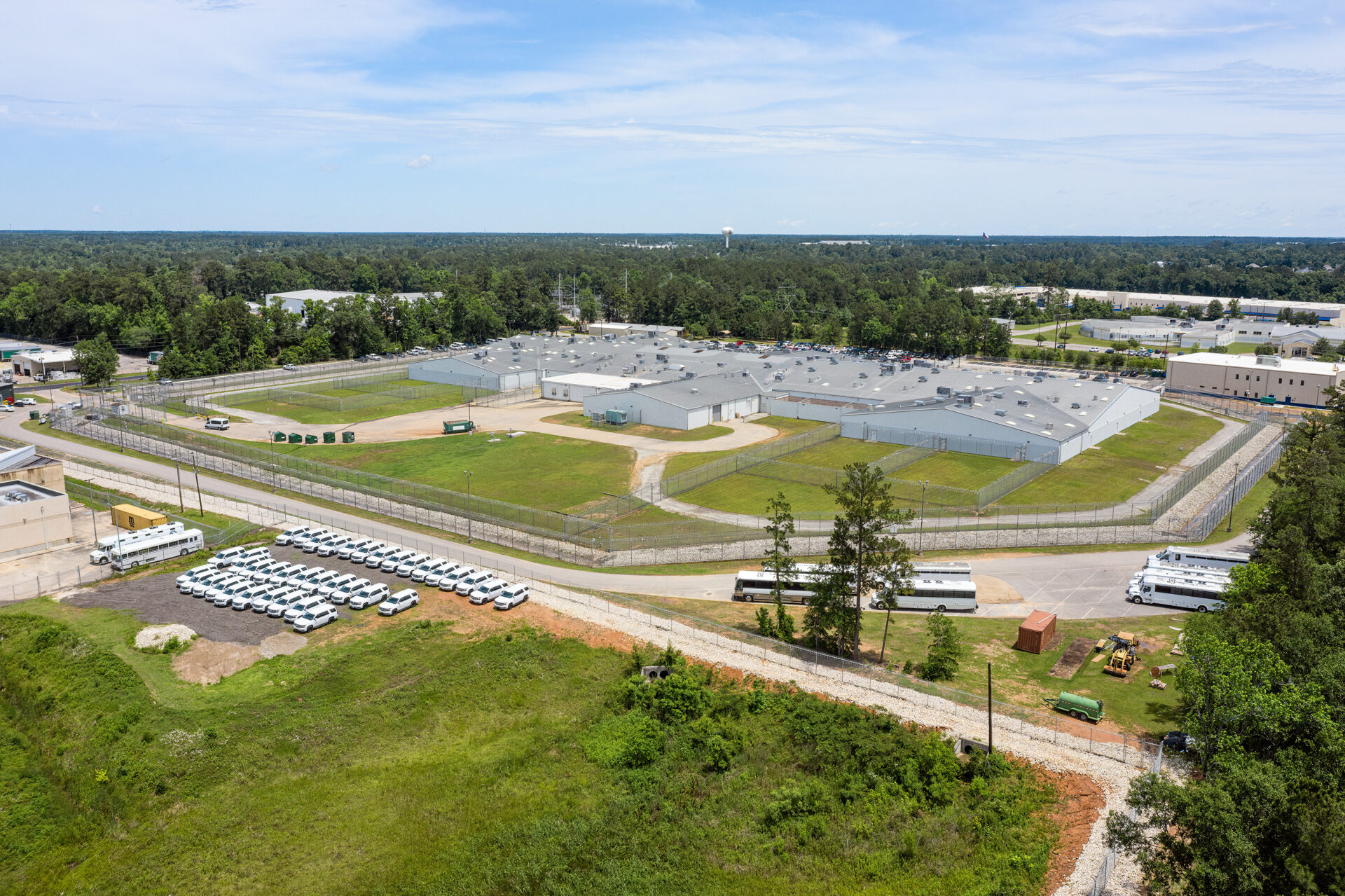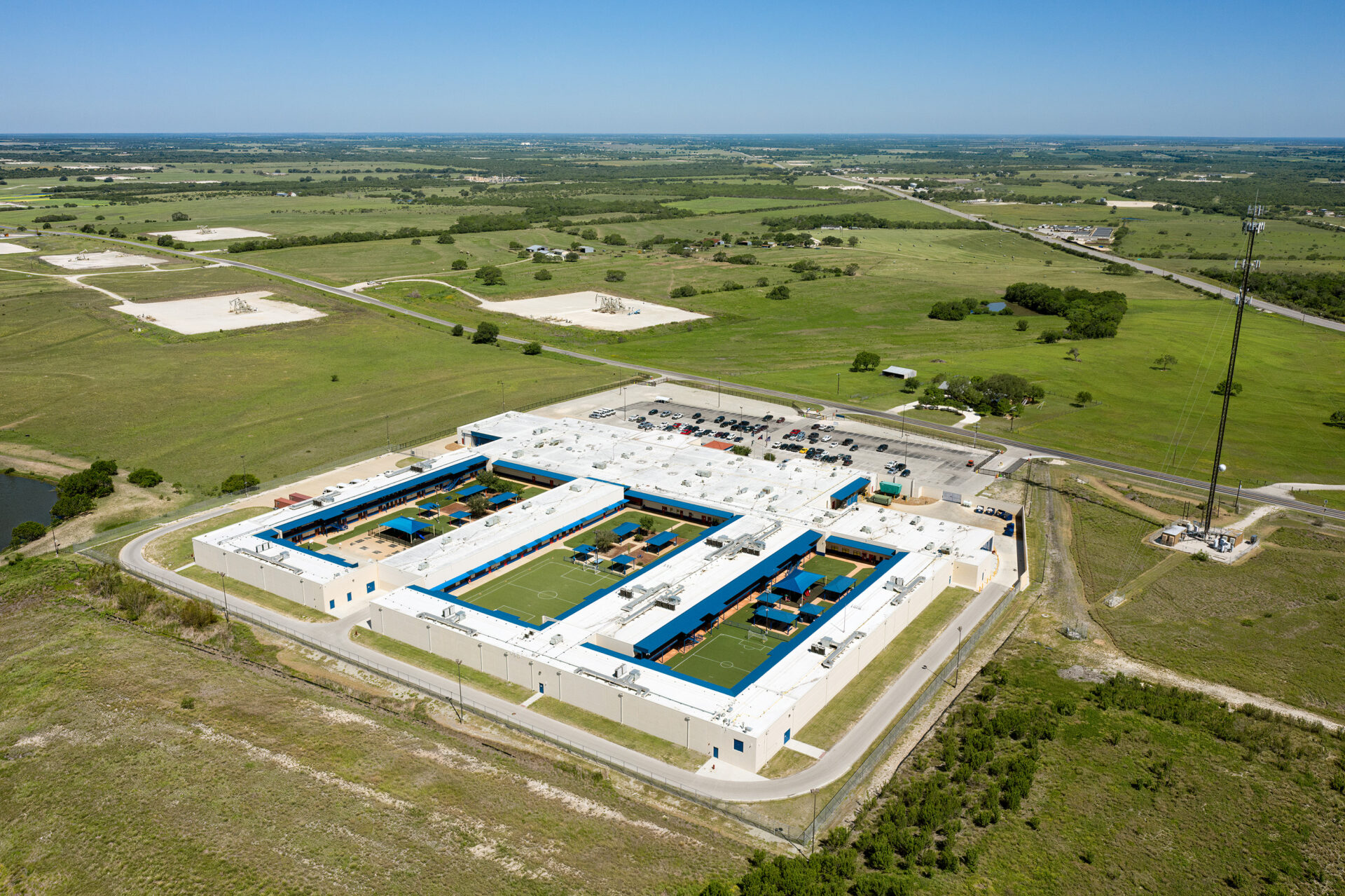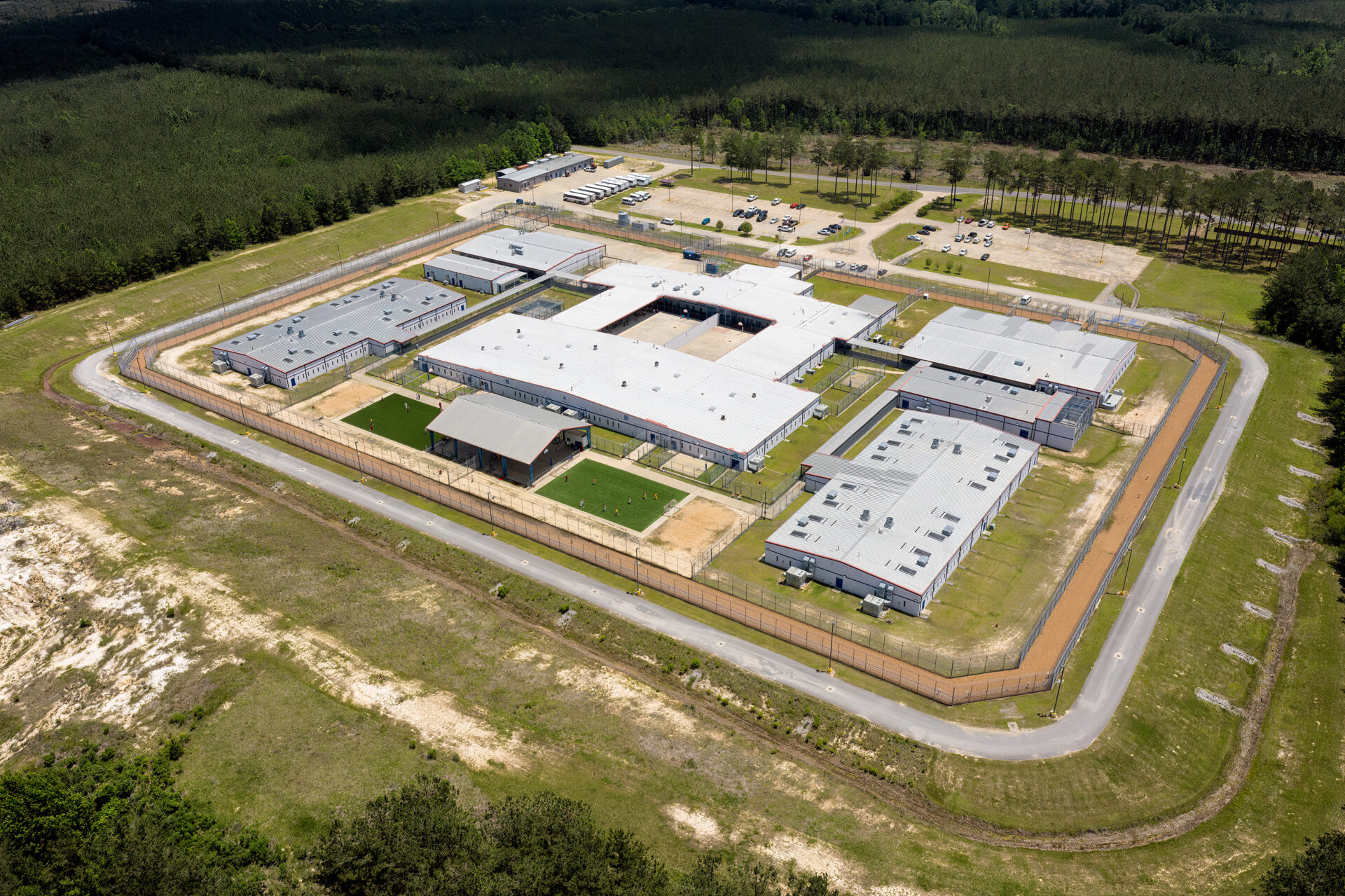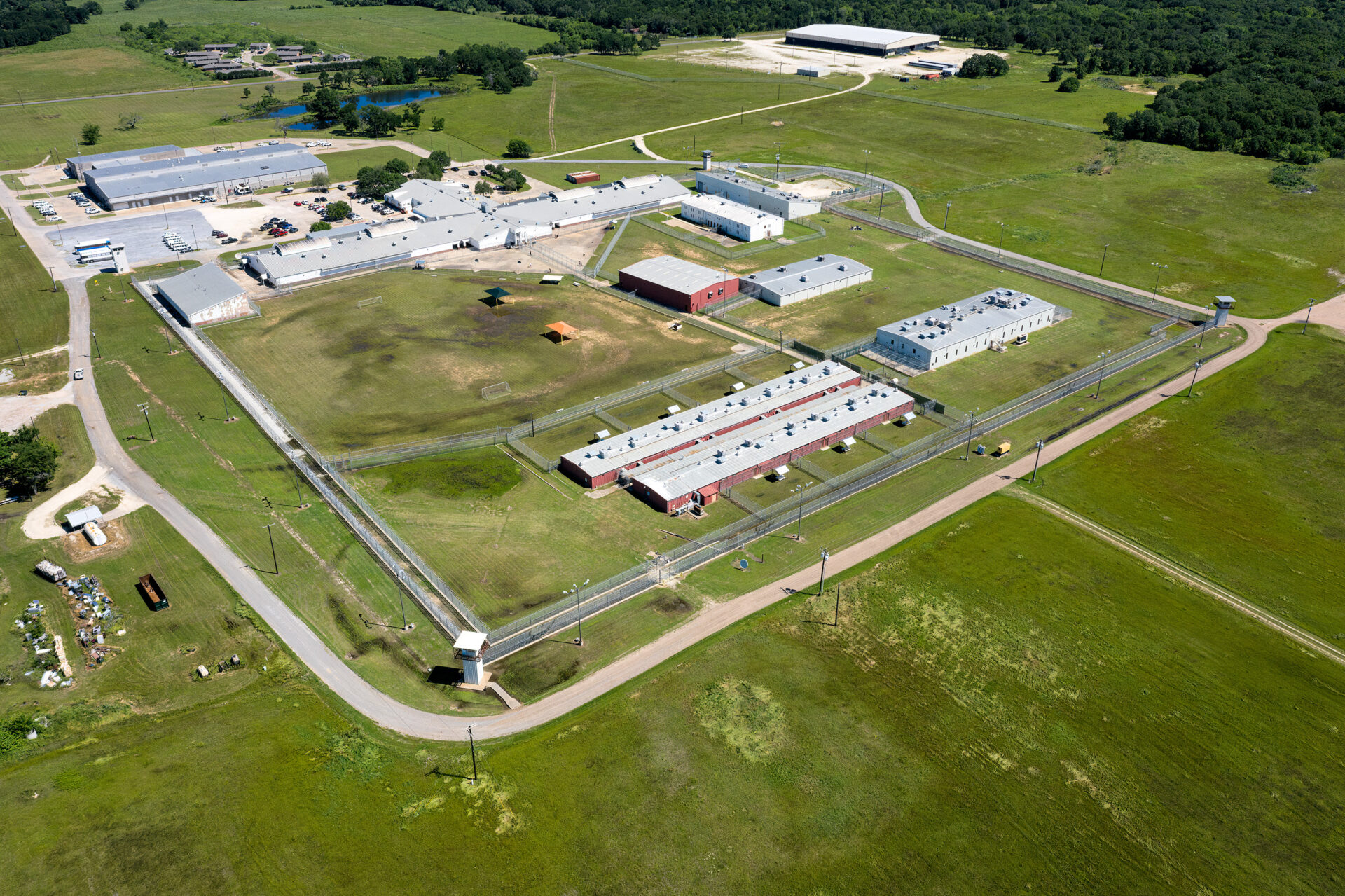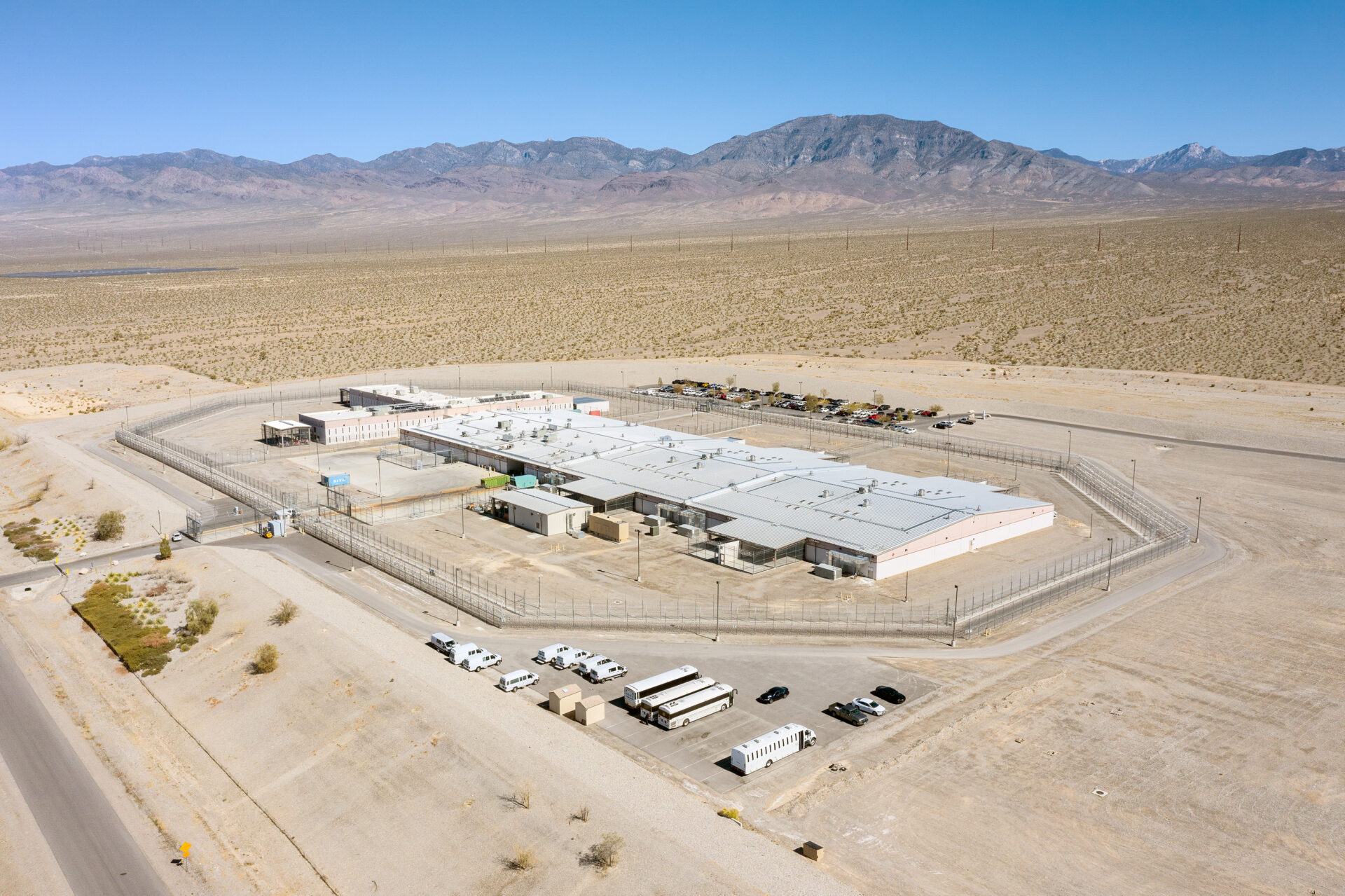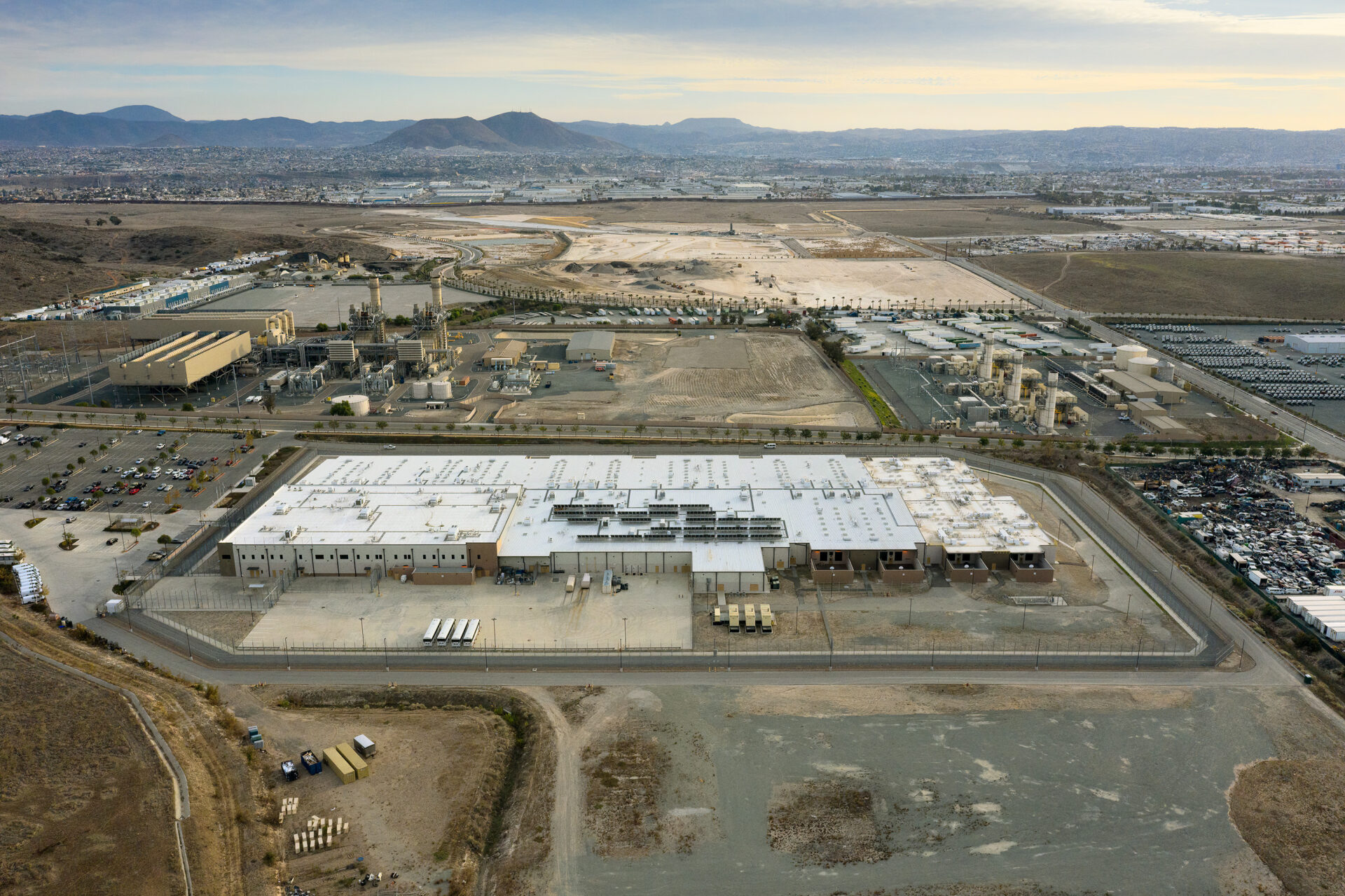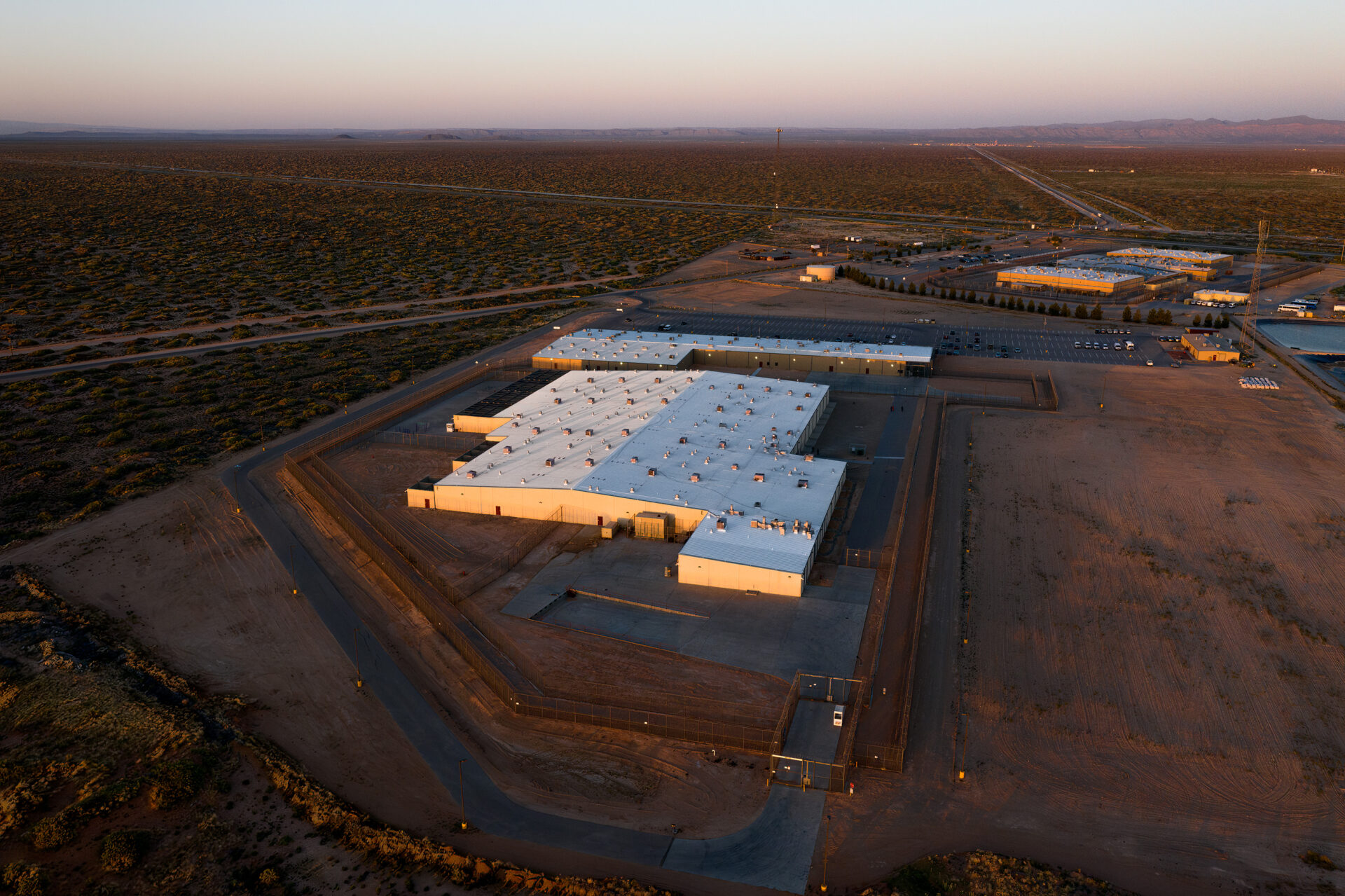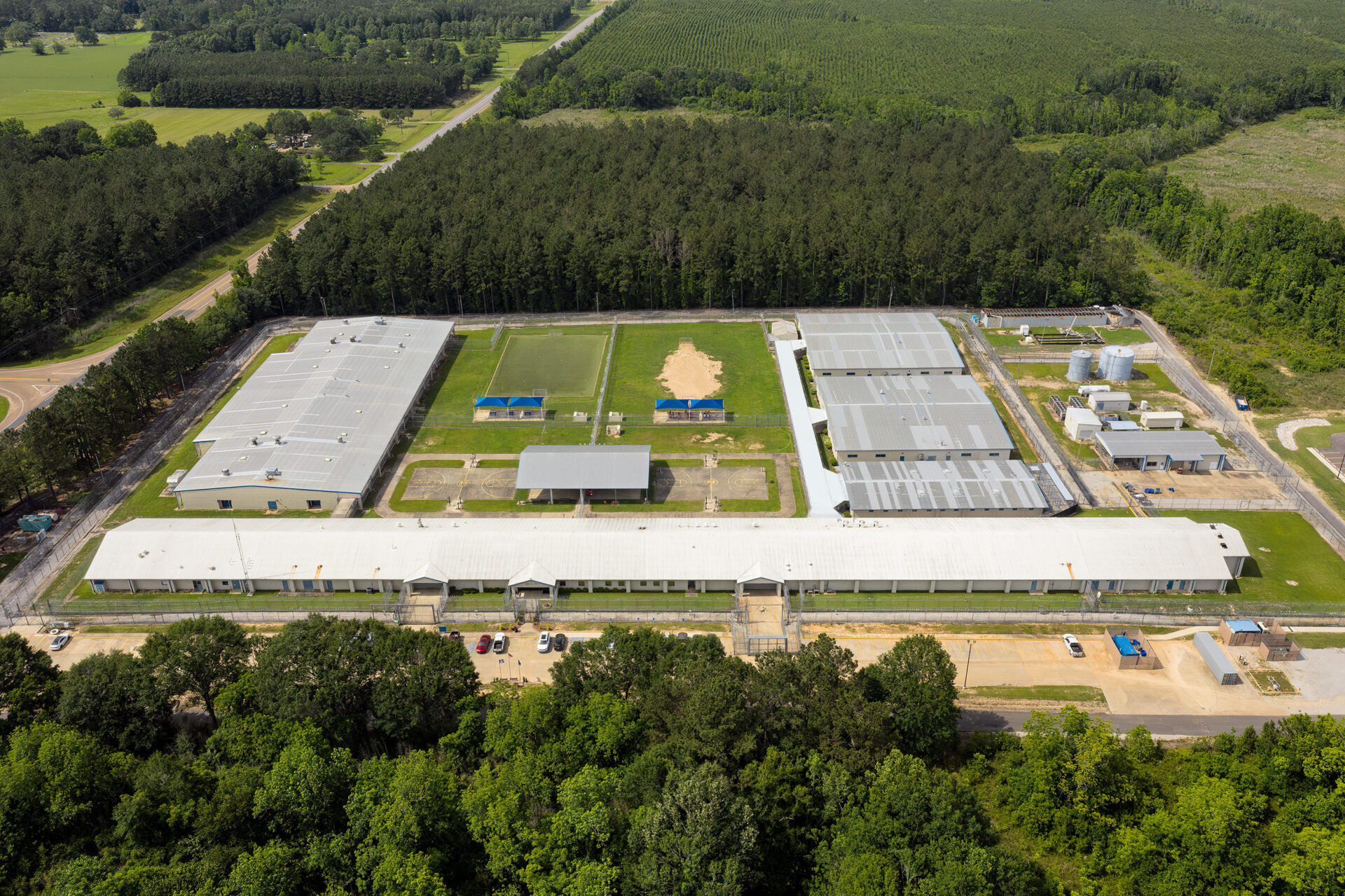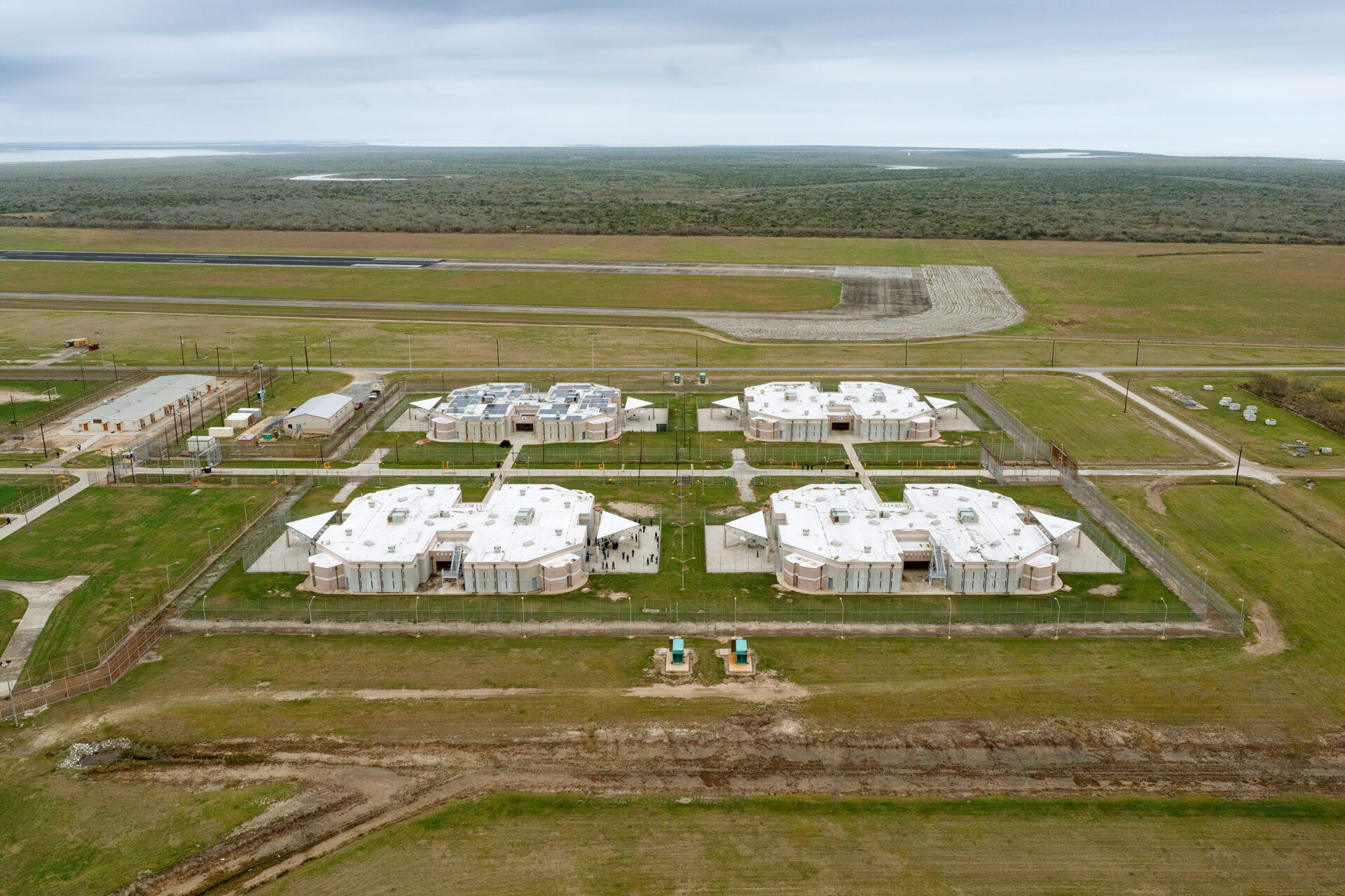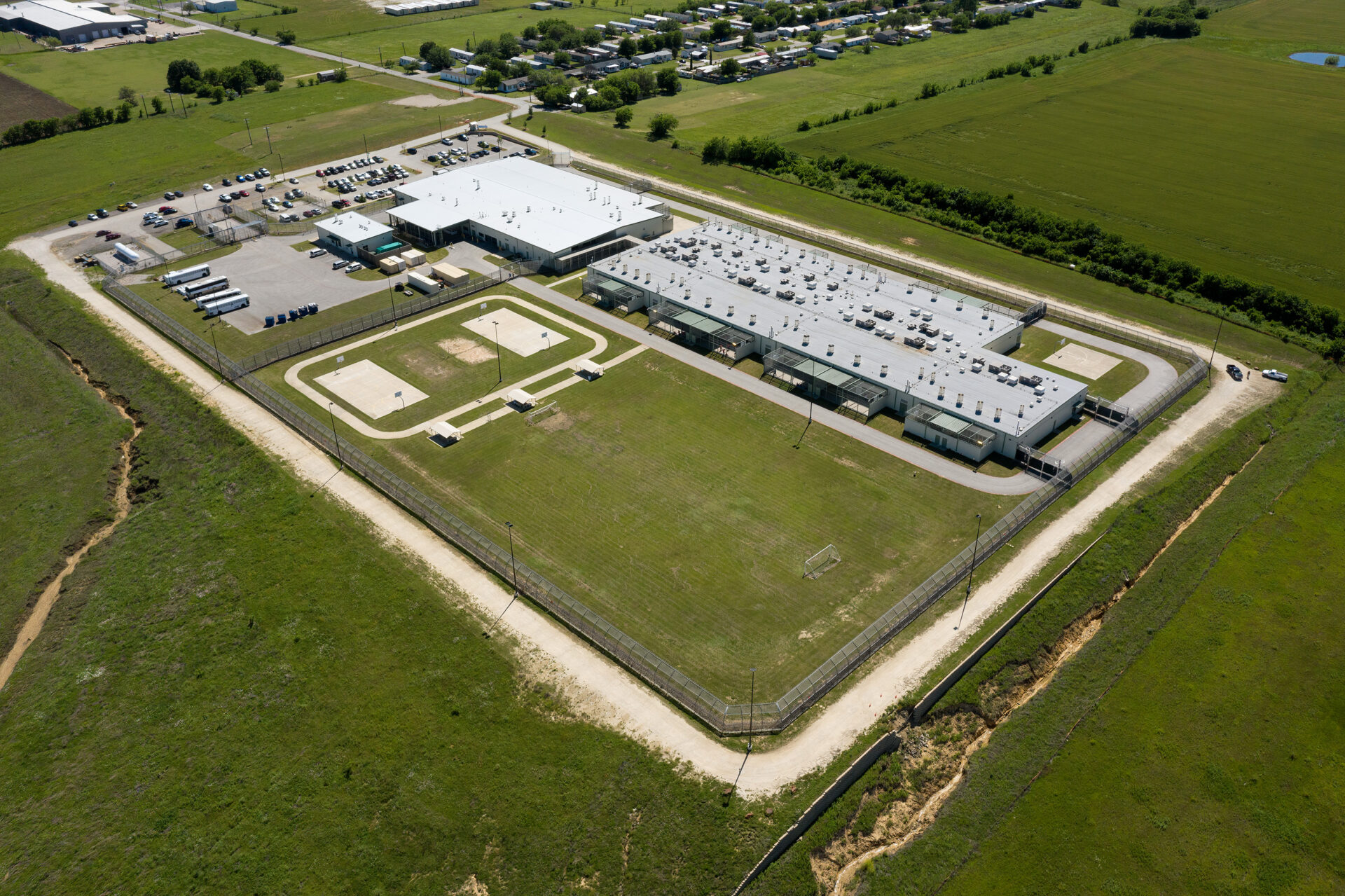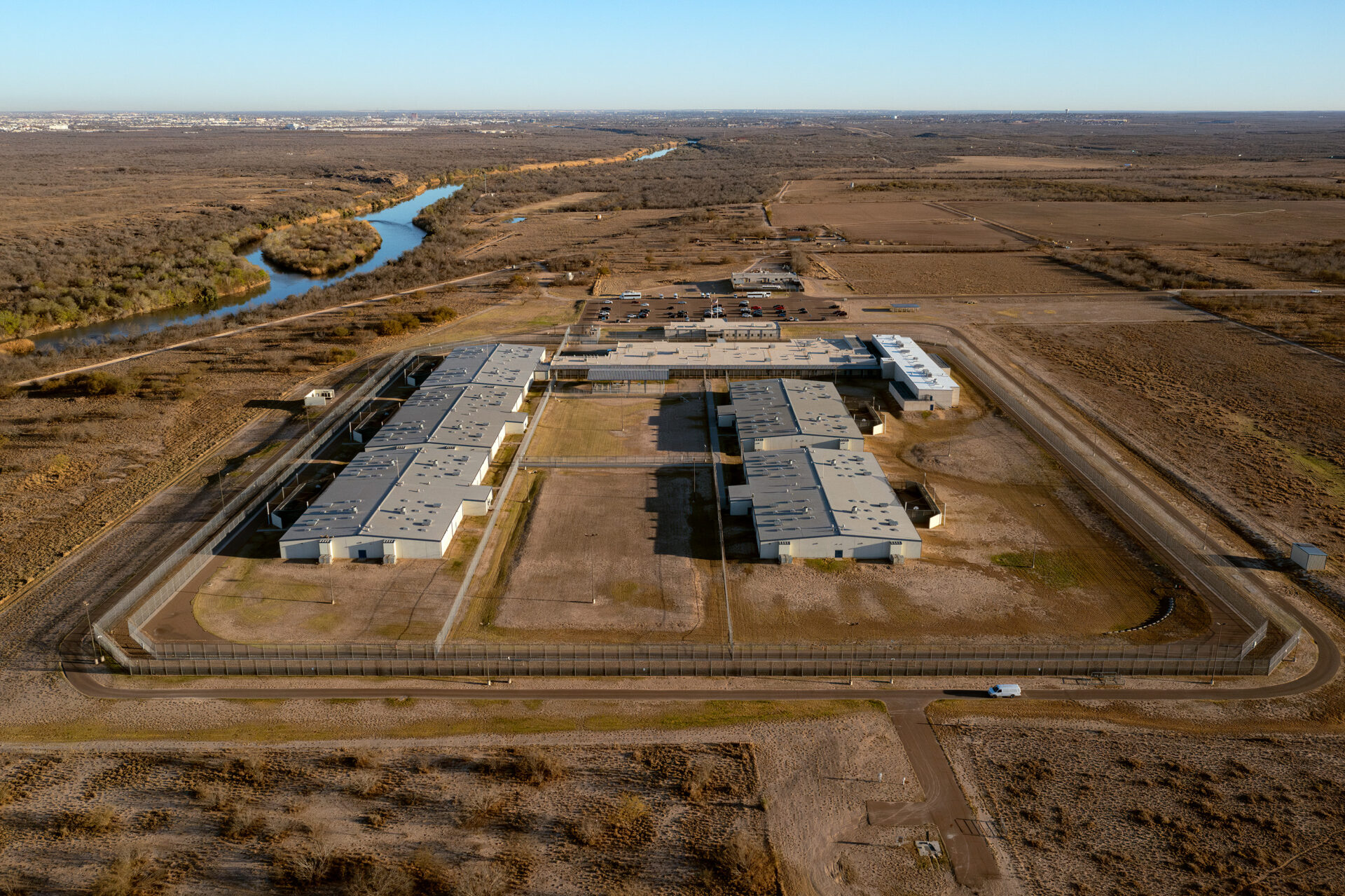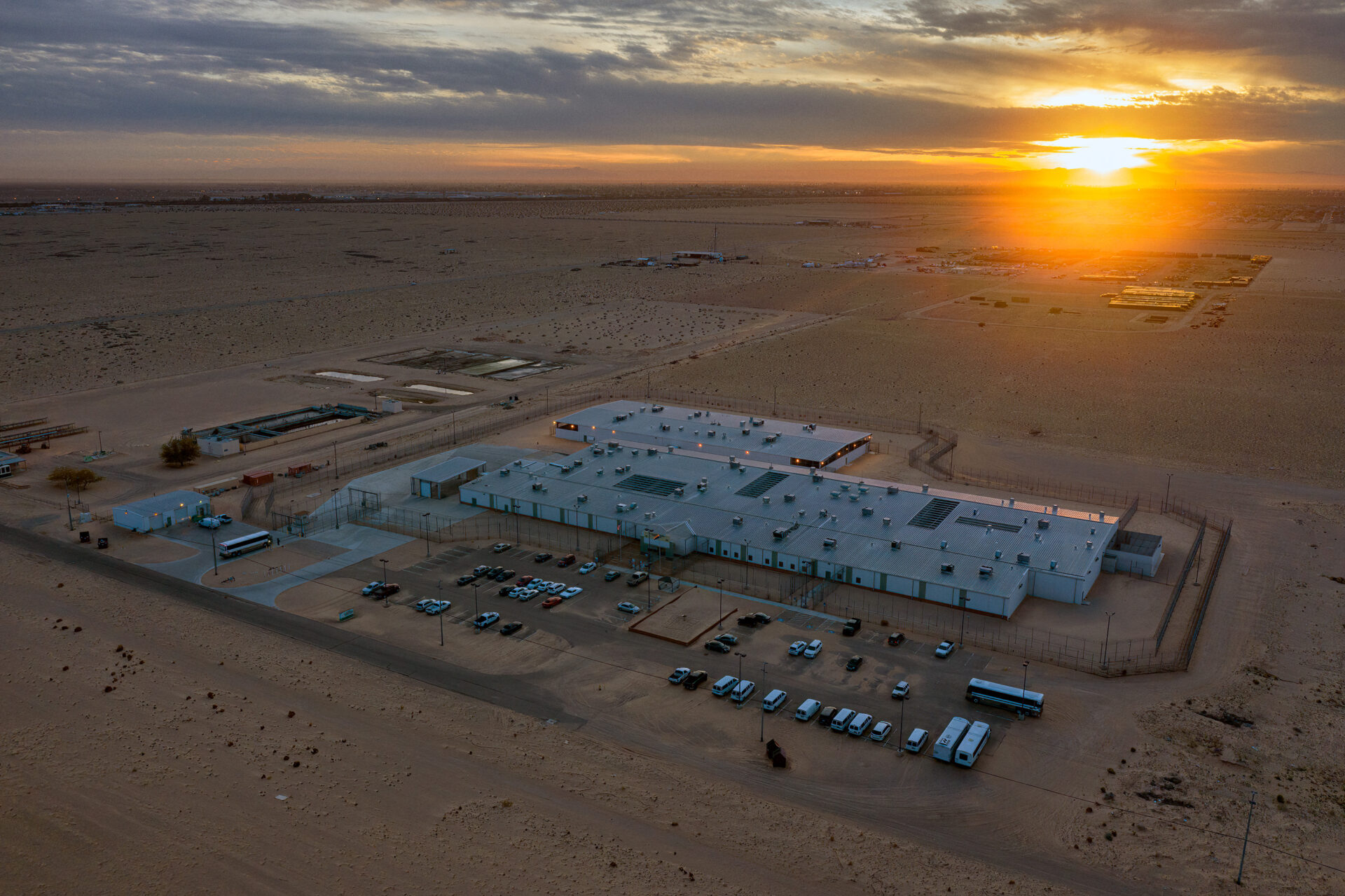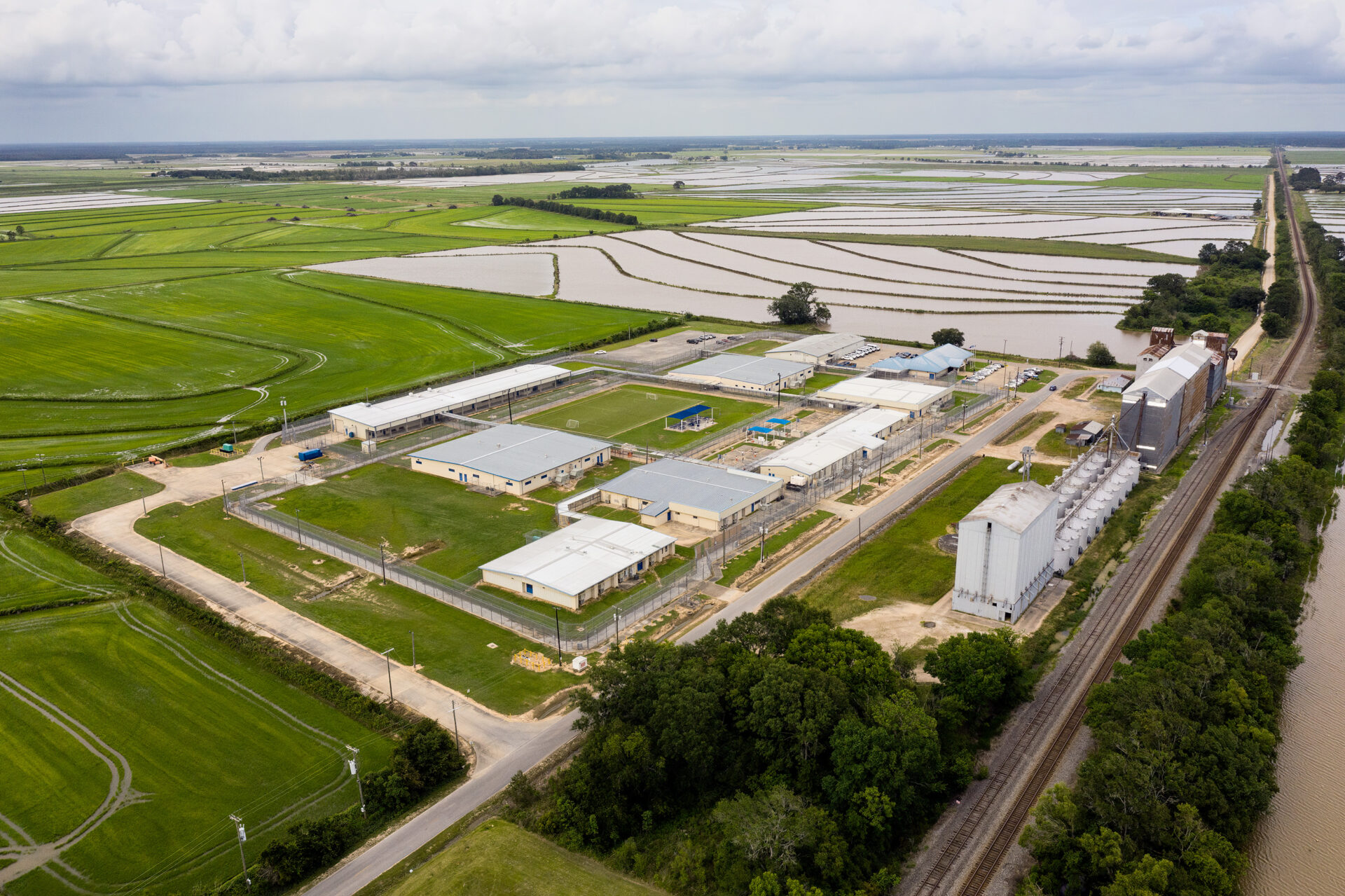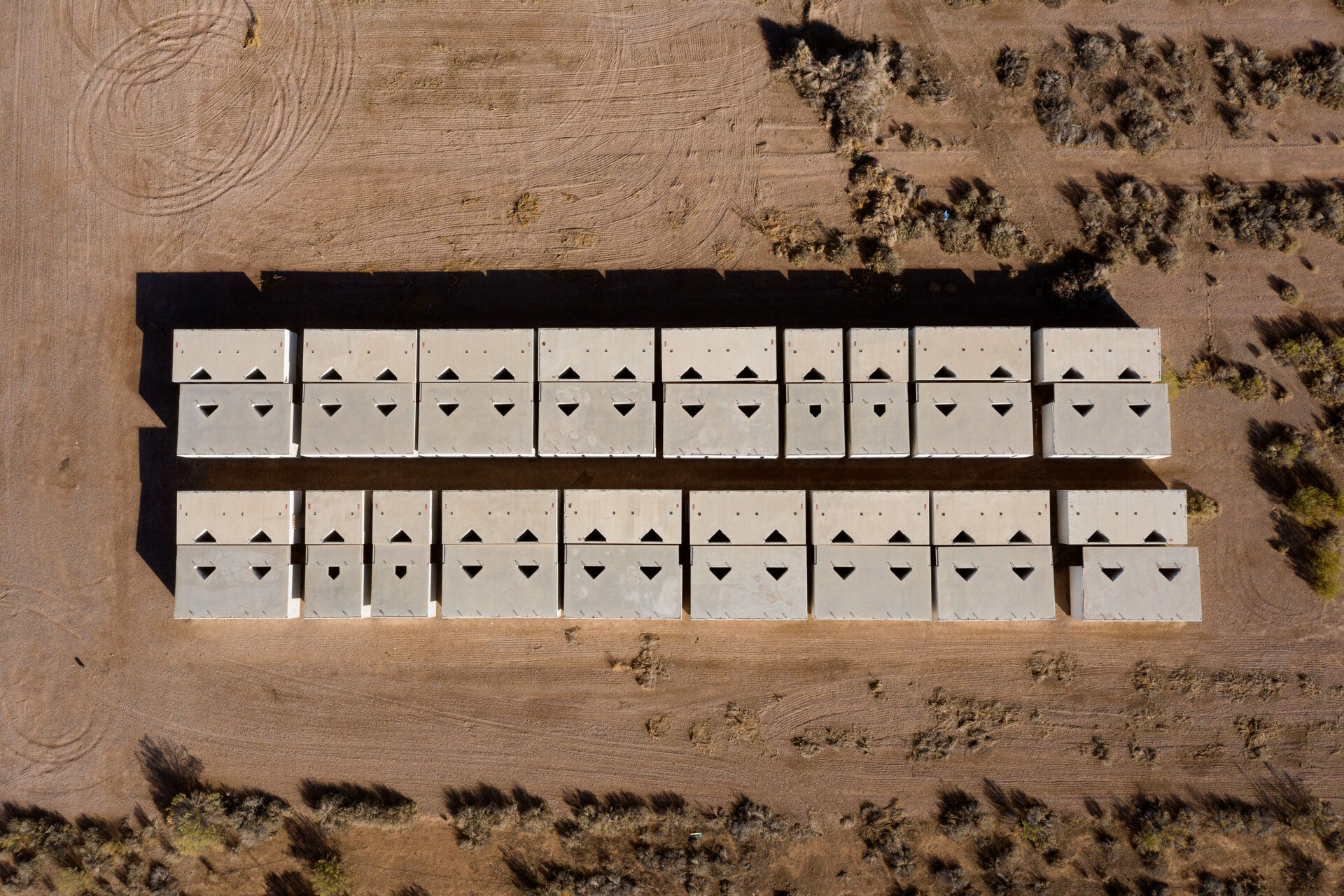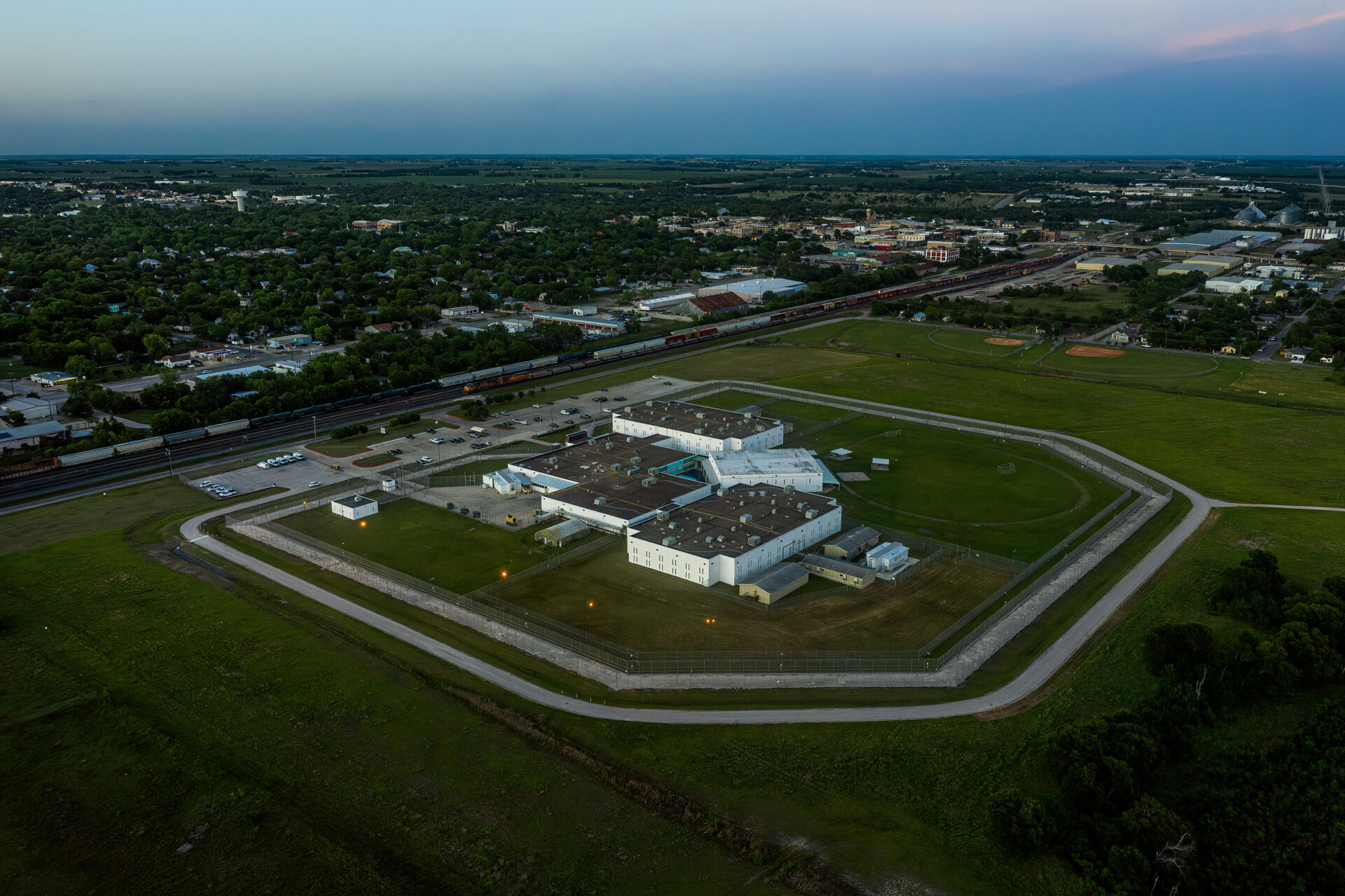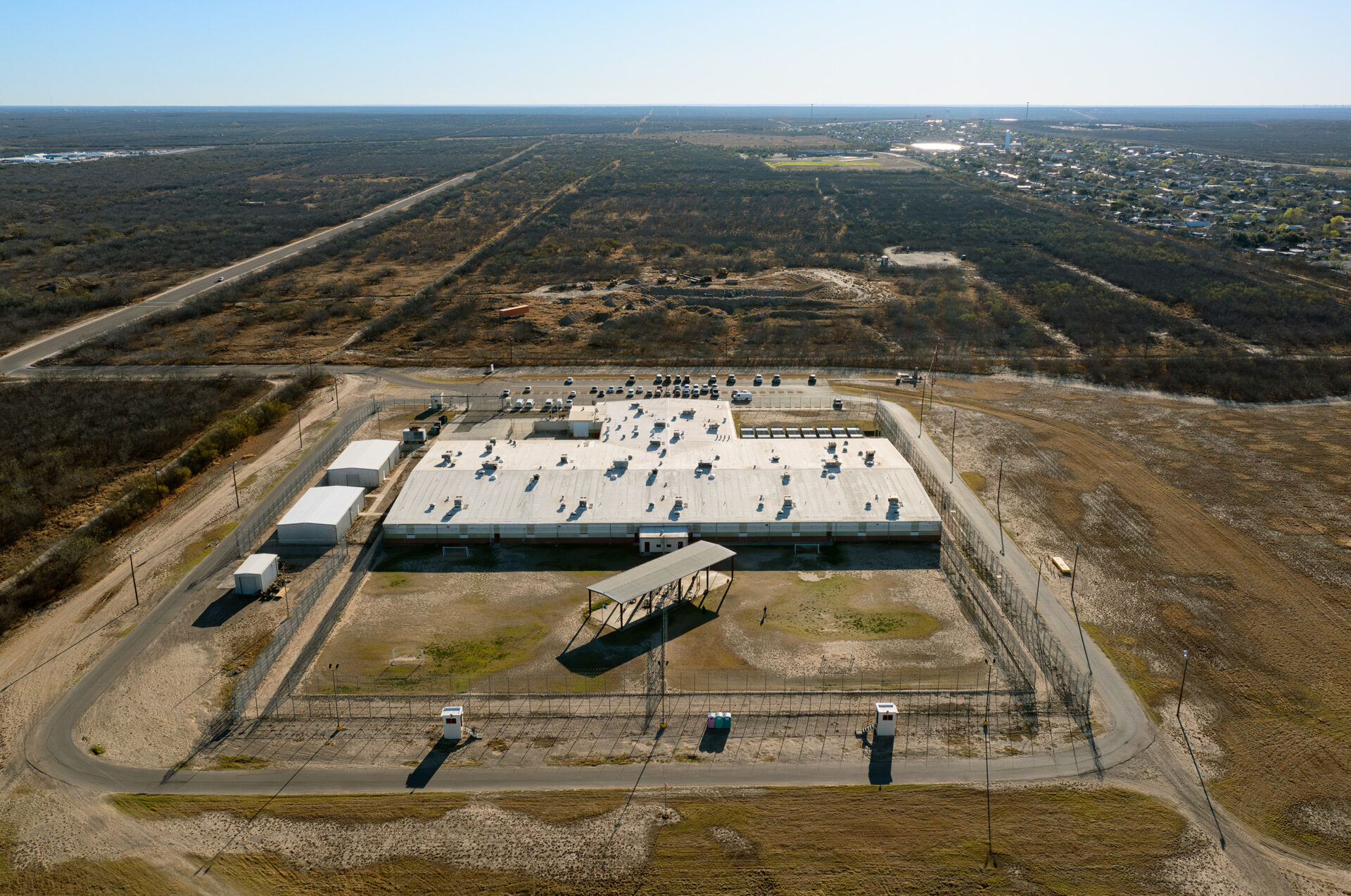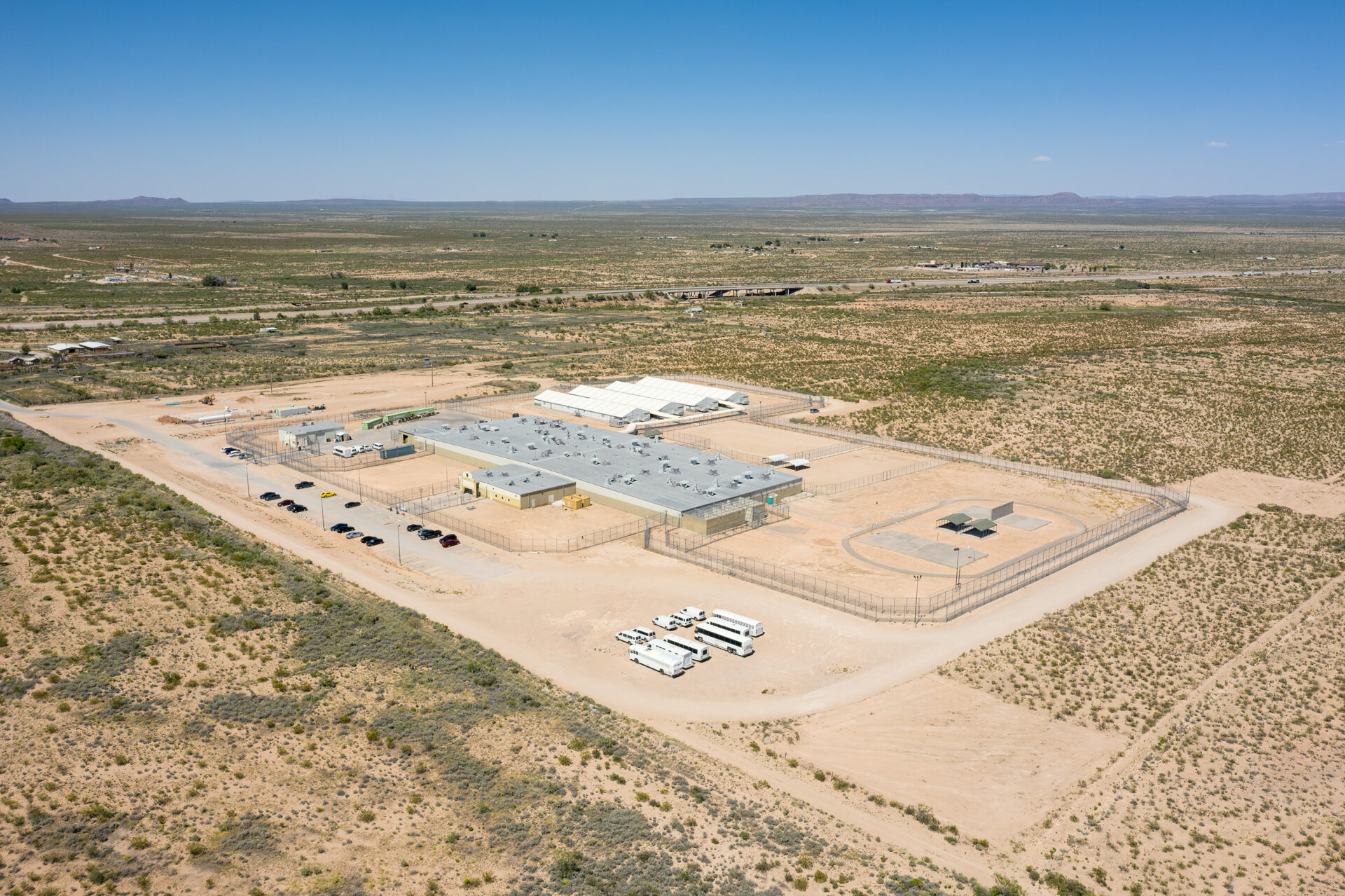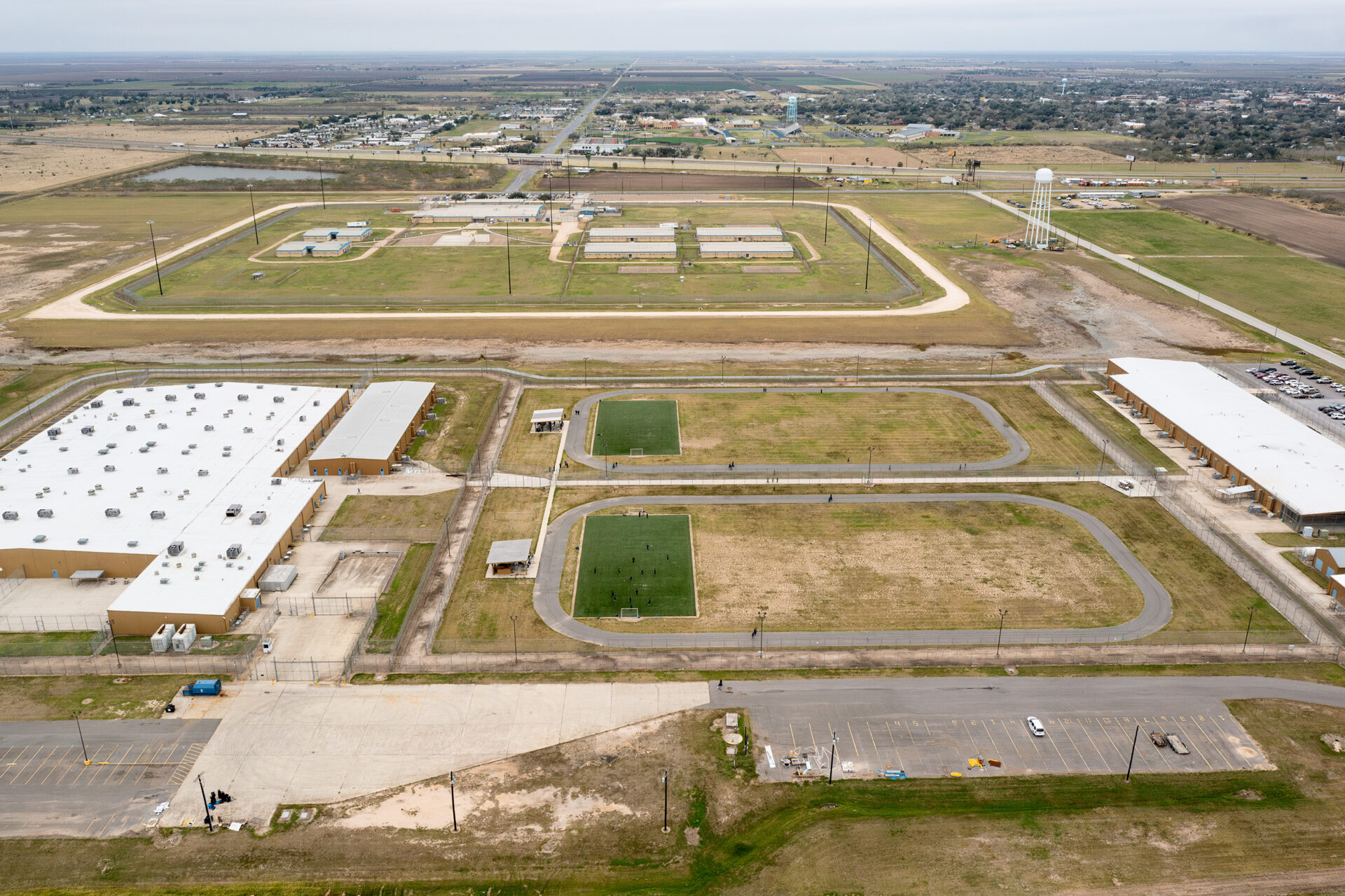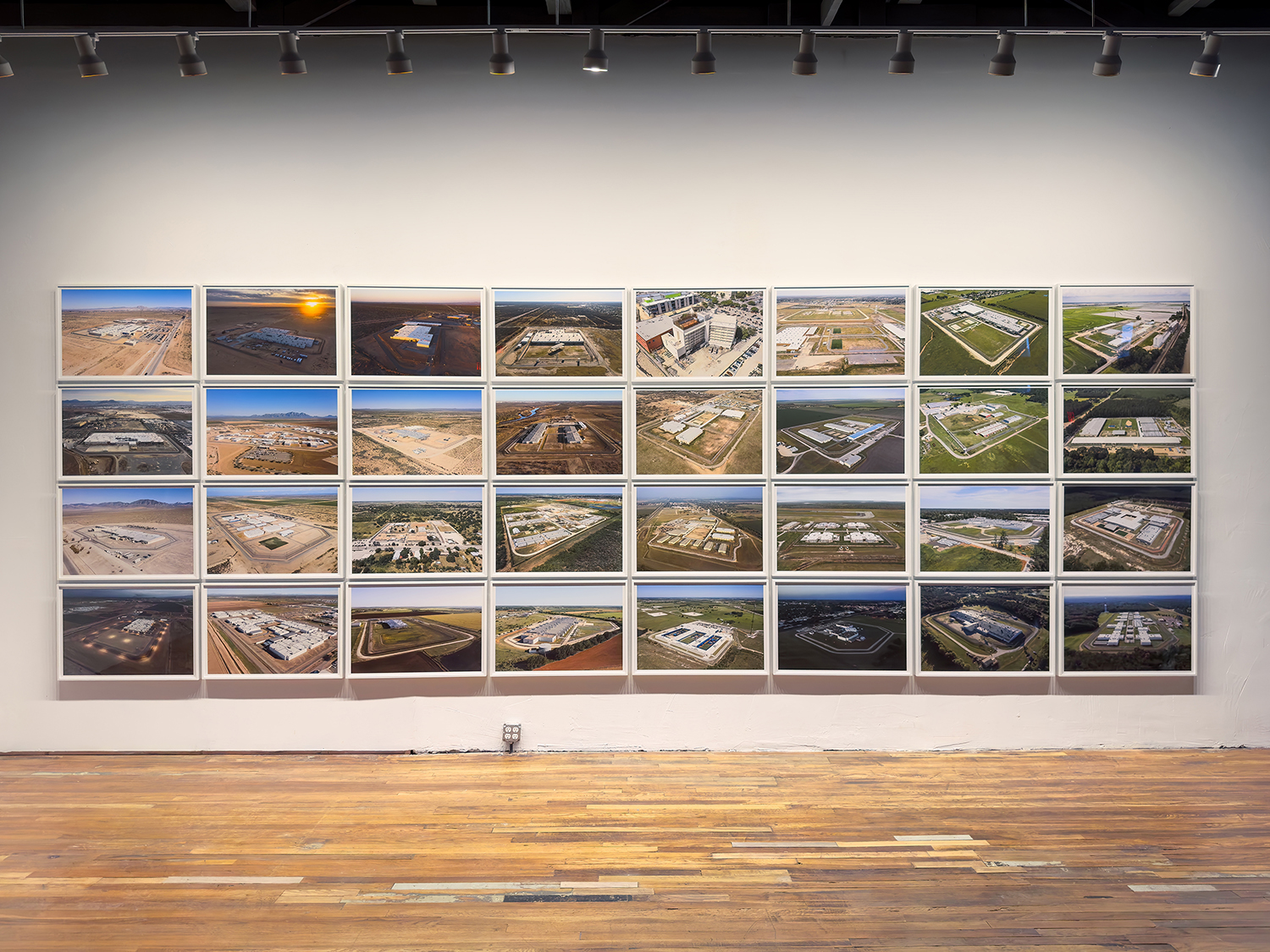COMPLEX
For its first exhibition in a re-conceived space, Pidgin Palace Arts presents new work by David Taylor.
Composed of photographs, video and objects, the installation functions as the latest chapter in a two decade effort to chronicle the changing borderlands. The nucleus, from which the exhibition gets its title, COMPLEX is a visual survey of the vast system of privately operated prisons that incarcerate thousands of migrants and refugees under contract with Immigration and Customs Enforcement (ICE).

En esta primera exposición como espacio remodelado, Pidgin Palace Arts presenta la nueva obra de David Taylor.
La instalación, compuesta por fotografías, vídeos y objetos, es el último capítulo de un esfuerzo de dos décadas dedicado a la crónica de las transformaciones de las zonas fronterizas. El núcleo que da título a la exposición, COMPLEX, es un estudio visual del vasto sistema de prisiones, administradas por empresas privadas, que encarcelan a miles de inmigrantes y refugiados bajo contrato con el Servicio de Inmigración y Control de Aduanas (ICE).
Las obras de vídeo, en correspondencia con las imágenes estereoscópicas, presentan las zonas fronterizas como un terreno intensamente vigilado y fabricado por la industria privada. Los modelos a escala, meticulosamente fabricados, abren preguntas sobre cómo las infraestructuras fronterizas operan dentro del lenguaje de los monumentos y los memoriales. Si revelamos nuestras prioridades y valores sociales a través de lo que construimos, quiere decir que las estructuras asociadas a la seguridad fronteriza, la vigilancia y la detención de inmigrantes figuran entre los proyectos recientes más ambiciosos de nuestra nación.
![]()
Corresponding video works and stereoview imagery cast the borderlands as an intensively surveilled terrain manufactured by private industry. Meticulously fabricated scale models invoke questions about how border infrastructure functions within the language of monuments and memorials. If we reveal our societal priorities and values through what we build, then structures associated with border security, surveillance and migrant detention are among our nation’s most ambitious, recent projects.
Taylor asserts that detention centers are emblematic of an expansion of the borderland security regime which, in its totality, functions as a system of overlapping views and regulated spaces. In Department of Homeland Security parlance, the promise is “situational awareness” and “operational control.” In reality, perceived gaps in the system necessitate ever increasing measures —a perpetual cycle of escalation. In effect, the border reproduces itself at a cost measured in both human life and trillions of dollars.
Symbolically, the work of securing the U.S./Mexico border can be read as a culminating act of nation building. Border wall, surveillance infrastructure and detention facilities are the recent, built legacy of that enterprise. Ultimately the project suggests the pervasiveness of the border security industrial complex in the American geography.
A significant portion of gallery sales will support the work of the Florence Immigrant and Refugee Rights Project and Salvavision.

![]()

Taylor afirma que los centros de detención son emblemáticos de una expansión del régimen de seguridad fronteriza que, en su totalidad, funciona como un sistema de visiones superpuestas y espacios regulados. En la jerga del Departamento de Seguridad Nacional, la promesa es «conocimiento de la situación» y «control operativo». En realidad, las deficiencias percibidas en el sistema hacen necesarias medidas cada vez mayores, un ciclo perpetuo de escalada. En efecto, la frontera se reproduce a sí misma con un coste que se mide tanto en vidas humanas como en trillones de dólares.
Simbólicamente, la labor de protección de la frontera entre Estados Unidos y México puede interpretarse como un acto culminante de construcción nacional. El muro fronterizo, las infraestructuras de vigilancia y los centros de detención son el legado reciente de esta labor. En última instancia, el proyecto sugiere la omnipresencia del complejo industrial de seguridad fronteriza en la geografía estadounidense.
Una porción significativa de las ventas de la galería se destinará a apoyar el trabajo de las organizaciones Florence Immigrant, Refugee Rights Project, así como Salvavisión.
David Taylor
David Taylor’s artwork examines place, territory, history and politics. Exhibited internationally, his projects reveal how borders can function not only as spatial demarcations, but also as an amplifying device particularly attuned to geo-political, environmental and social conditions. Pursuing projects that chronicle the changing circumstances of the U.S.-Mexico borderlands, he was awarded a 2008 Guggenheim Fellowship and has released two monographs–Working the Line (Radius Books, 2010) and Monuments: 276 Views of the United States – Mexico Border (Radius Books and Nevada Museum of Art, 2015). His artwork is in the permanent collections of numerous institutions including the Nevada Museum of Art, the Nelson-Atkins Museum of Art, the Library of Congress, the New Mexico Museum of Art and the MFA Houston. Widely published, Taylor’s projects have been featured in outlets such as Art LTD., The Guardian, The New Yorker blog, Politico, The New York Times, The Los Angeles Times, Places Journal, PREFIX PHOTO, Fraction Magazine, the Mexico/Latin America Edition of Esquire Magazine and Arquine. Exhibition venues include the The Aldrich Contemporary Art Museum, Phoenix Art Museum, the MCA San Diego, the Mexican Cultural Institute in Washington DC, Museo de las Artes Universidad de Guadalajara, Oficina de Proyectos Culturales, MFA Houston, Utah Museum of Fine Arts and the Boise Art Museum.
Most recently Taylor was awarded a 2019 residency at Proyecto Siqueiros: La Tallera in Cuernavaca, Mexico, a 2019 Arizona Commission for the Arts Research and Development Grant and the 2023 Tucson Museum of Art Contemporary Art Society Prize. In 2023-24 his collaborative work with Marcos Ramírez ERRE travels to the Smithsonian American Art Museum in the exhibition Many Wests: Artists Shape an American Idea.
La obra artística de David Taylor examina temas relacionados al territorio, la historia y la política. Sus proyectos, expuestos internacionalmente, revelan cómo las fronteras pueden funcionar no sólo como demarcaciones espaciales, sino también como dispositivos que se amplifican especialmente en sintonía con las condiciones geopolíticas, medioambientales y sociales. En el marco de sus proyectos de crónica de las circunstancias en constante cambio de las zonas fronterizas entre Estados Unidos y México, recibió una beca Guggenheim en 2008 y ha publicado dos monografías: Working the Line (Radius Books, 2010) y Monuments: 276 Views of the United States – Mexico Border (Radius Books y Nevada Museum of Art, 2015). Su obra se encuentra en las colecciones permanentes de numerosas instituciones, entre ellas el Nevada Museum of Art, Nelson-Atkins Museum of Art, Library of Congress, New Mexico Museum of Art y el MFA Houston. Sus proyectos han sido publicados en medios como Art LTD, The Guardian, The New Yorker blog, Politico, The New York Times, The Los Angeles Times, Places Journal, PREFIX PHOTO, Fraction Magazine, la edición México/América Latina de Esquire Magazine y Arquine. Entre las sedes de sus exposiciones se encuentran el Aldrich Contemporary Art Museum, el Phoenix Art Museum, el MCA San Diego, el Instituto Cultural Mexicano de Washington DC, el Museo de las Artes Universidad de Guadalajara, la Oficina de Proyectos Culturales, el MFA Houston, el Utah Museum of Fine Arts y el Boise Art Museum.
Taylor ha sido galardonado recientemente en 2019 con una residencia en el Proyecto Siqueiros: La Tallera en Cuernavaca, México; así como una beca de Investigación y Desarrollo otorgada por la Arizona Commission for the Arts. En 2023 recibió el Contemporary Art Society Prize galardonado por el Tucson Museum of Art. En 2023-24 su obra, en colaboración con Marcos Ramírez ERRE, se expone en el Smithsonian American Art Museum en la muestra Many Wests: Artists Shape an American Idea.
